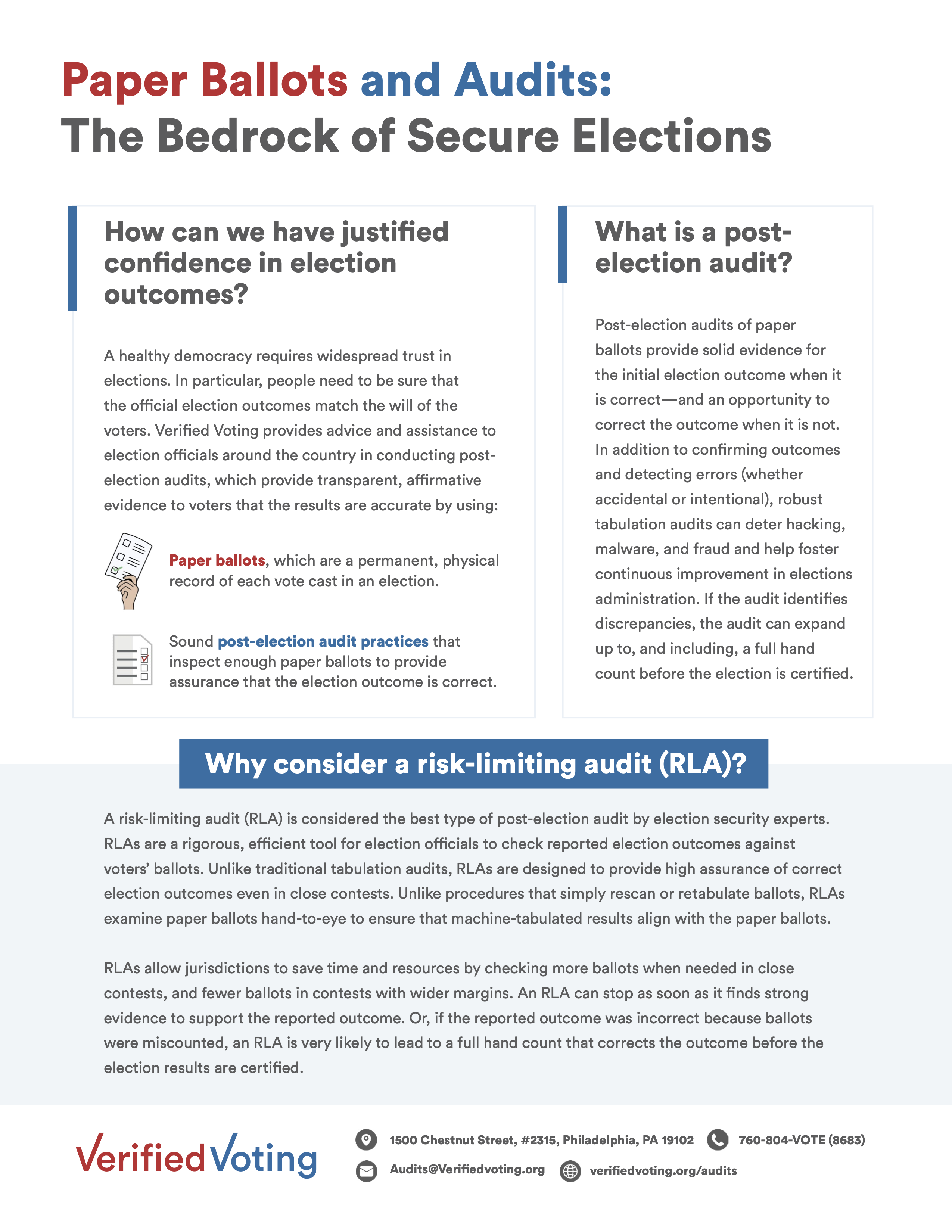

Audits and recounts are two different post-election processes, but both are designed to build confidence in our elections—they help demonstrate that the winner won and the loser lost. Audit and recount laws vary by state and the table below summarizes important information about recount and audit laws in Arizona, Georgia, Michigan, Nevada, Pennsylvania, and Wisconsin.
MORE Post-Election Audit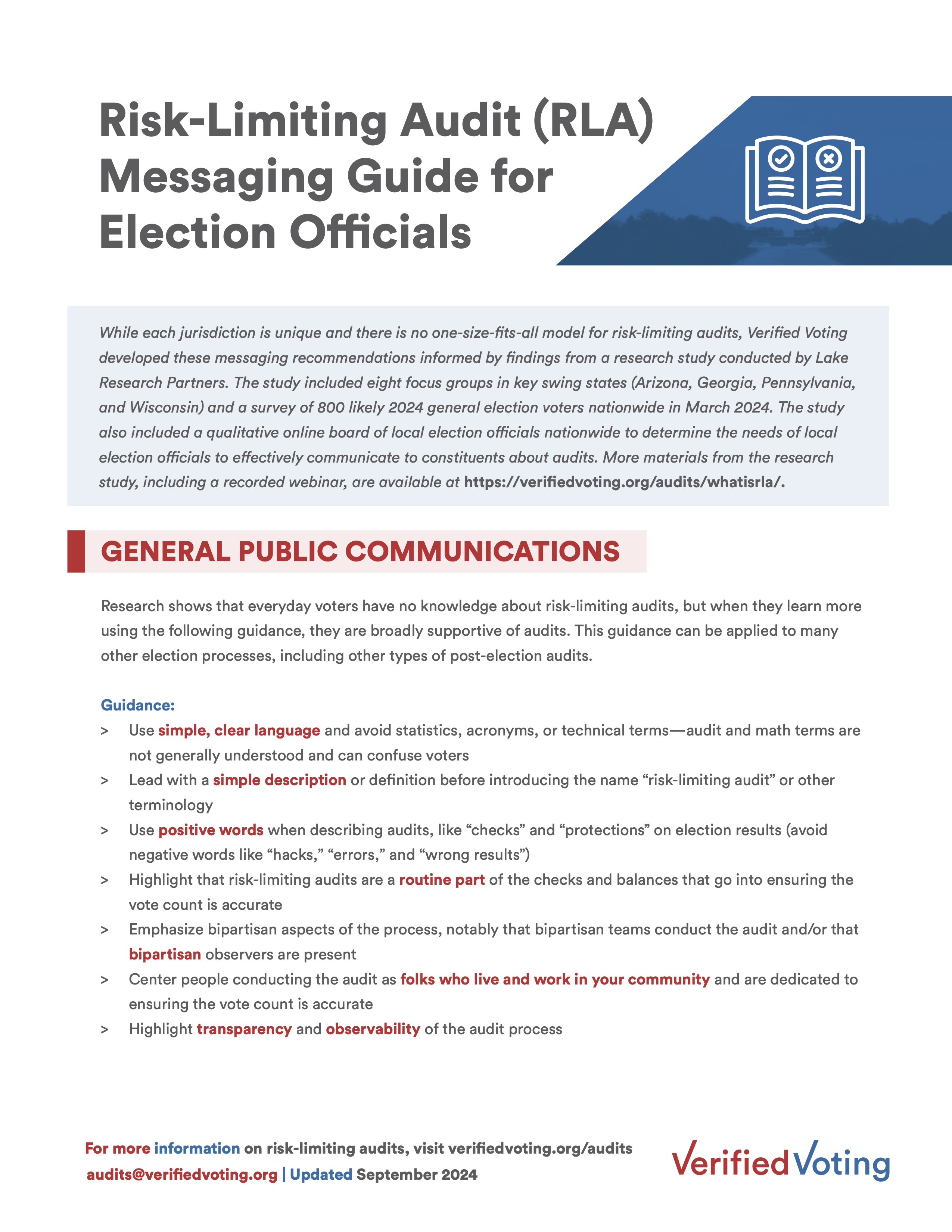
While each jurisdiction is unique and there is no one-size-fits-all model for risk-limiting audits, Verified Voting developed these messaging recommendations informed by findings from a research study conducted by Lake Research Partners.
MORE Post-Election Audit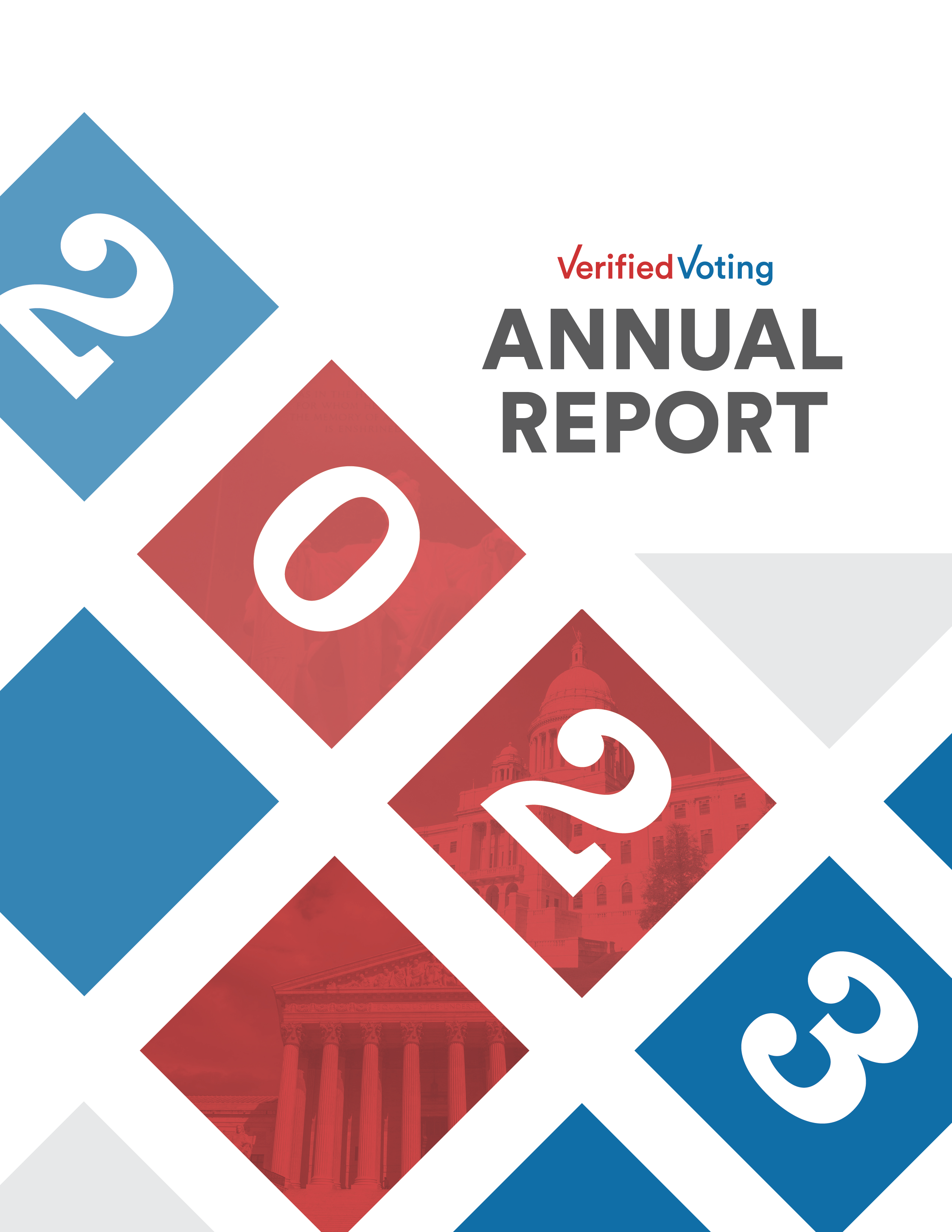
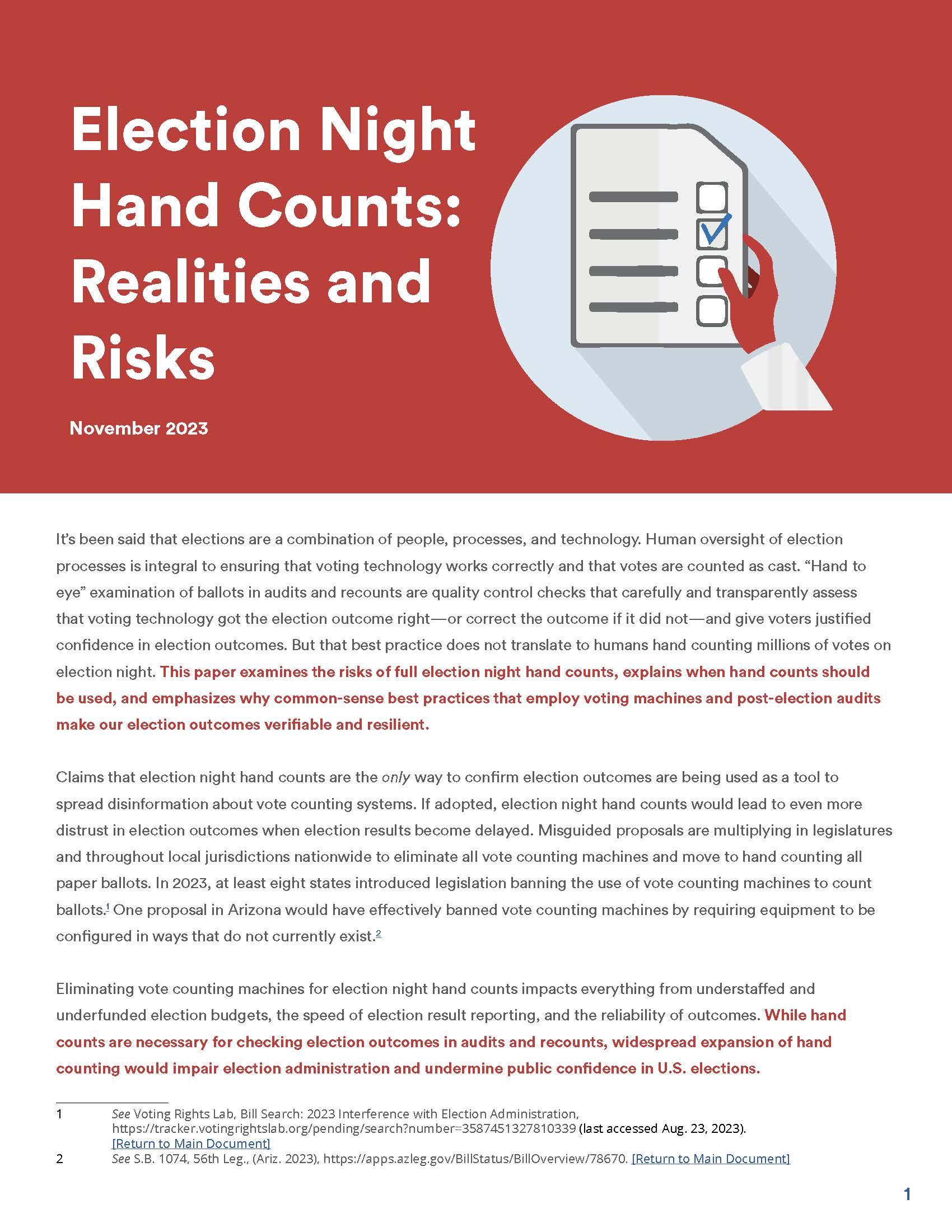
This paper examines the risks of full election night hand counts, explains when hand counts should be used, and emphasizes why common-sense best practices that employ voting machines and post-election audits make our election outcomes verifiable and resilient.
MORE Voting Equipment, Post-Election Audit, Paper Records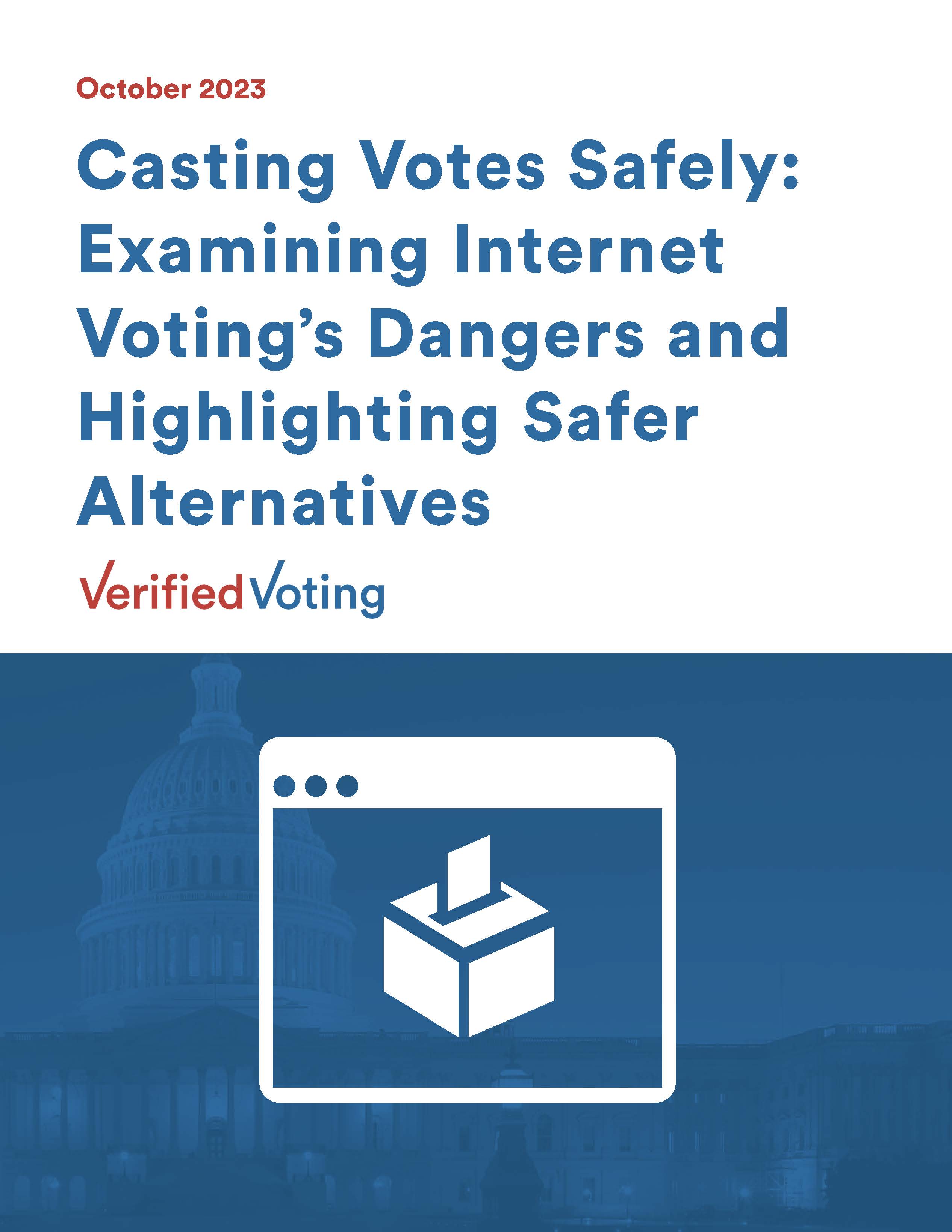
Democracy depends on citizens’ trust in our elections, the ability to cast a ballot without obstacles, and having
verifiable proof that the winner won and the loser lost. If expanded, internet voting would undermine the fundamental
principles of our democracy: private and trustworthy elections that give voters justified confidence that their
votes were counted as cast. We address internet voting’s dangers and discuss better options that enable voter
enfranchisement while still protecting the security of our elections.
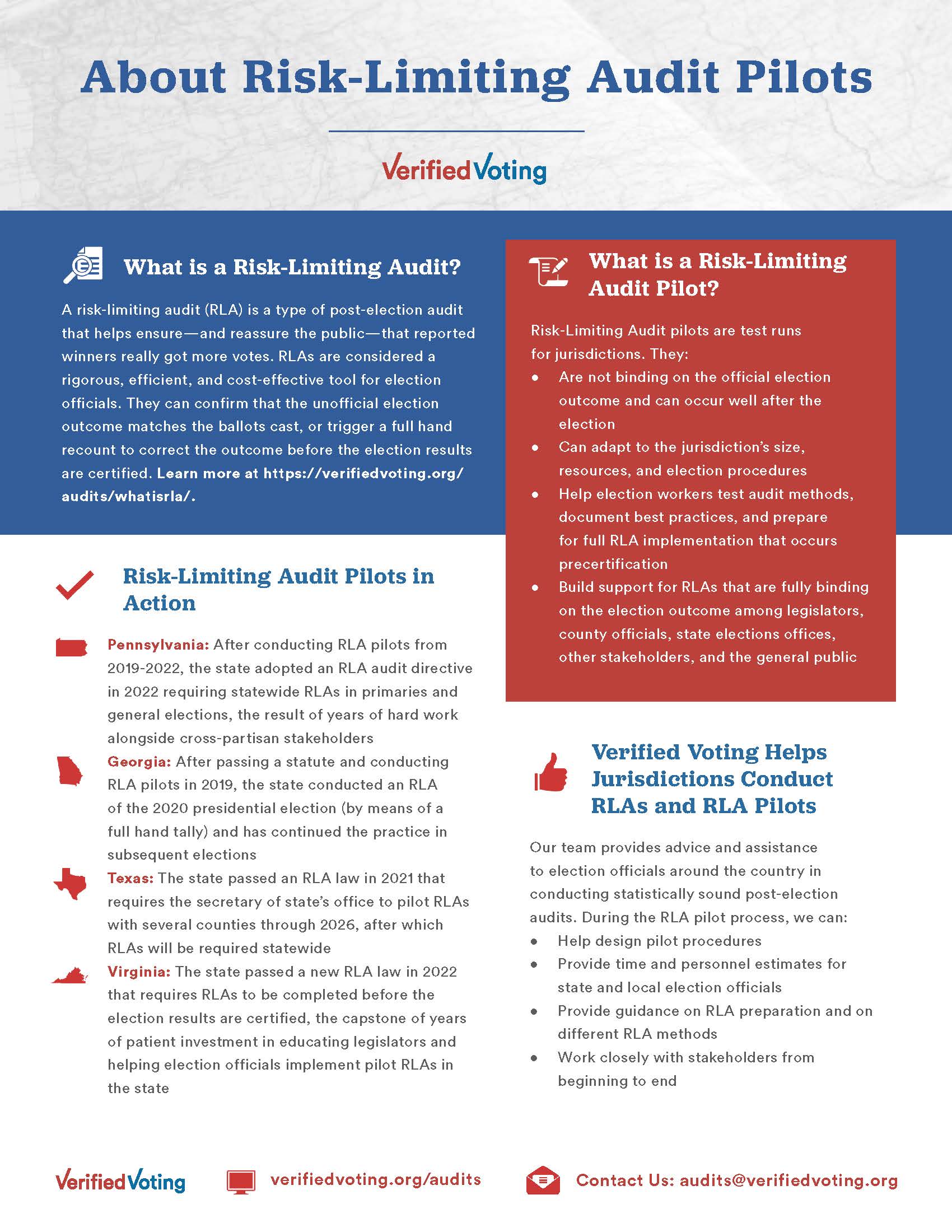
Verified Voting’s downloadable resource on what risk-limiting audit pilots are and how Verified Voting helps jurisdictions across the country conduct them.
MORE Post-Election Audit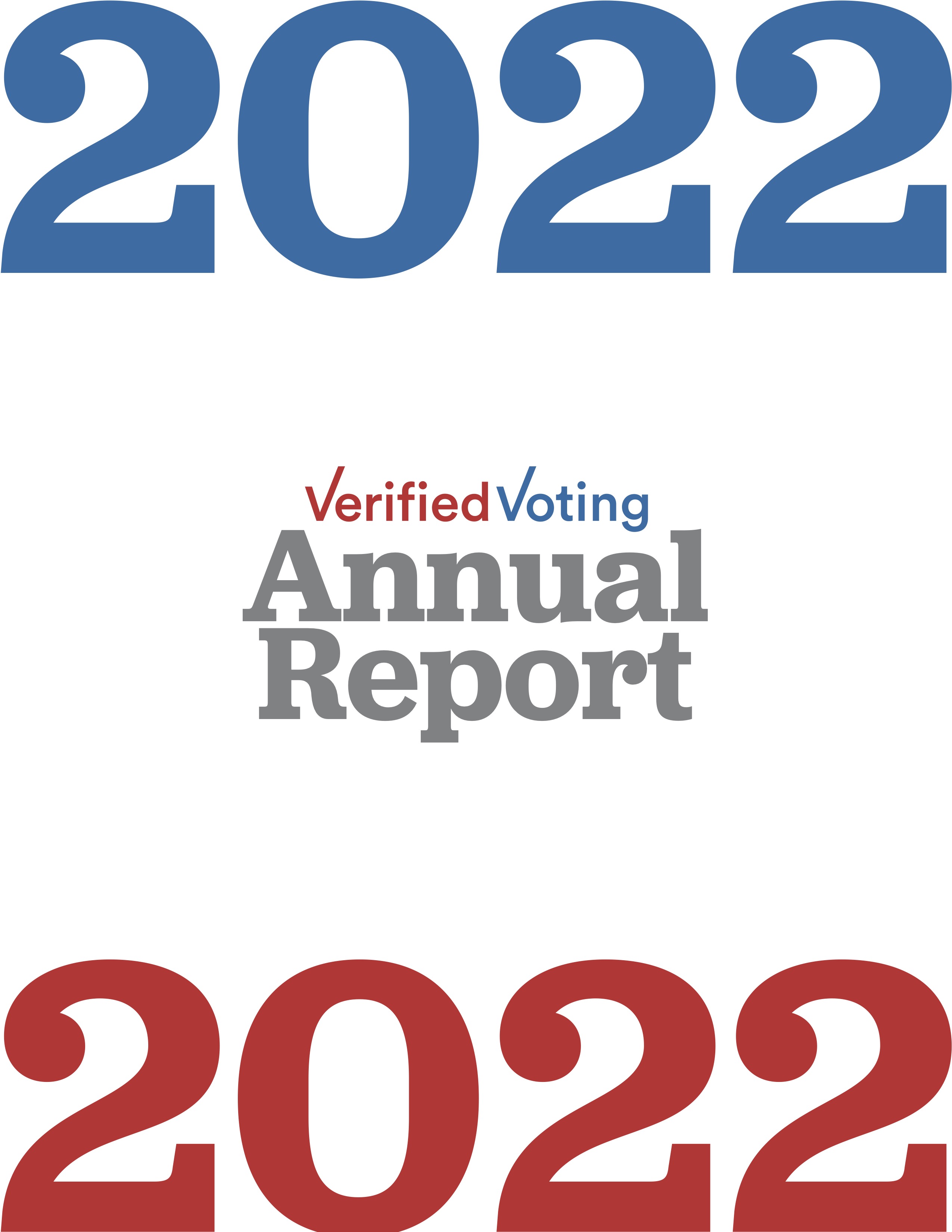
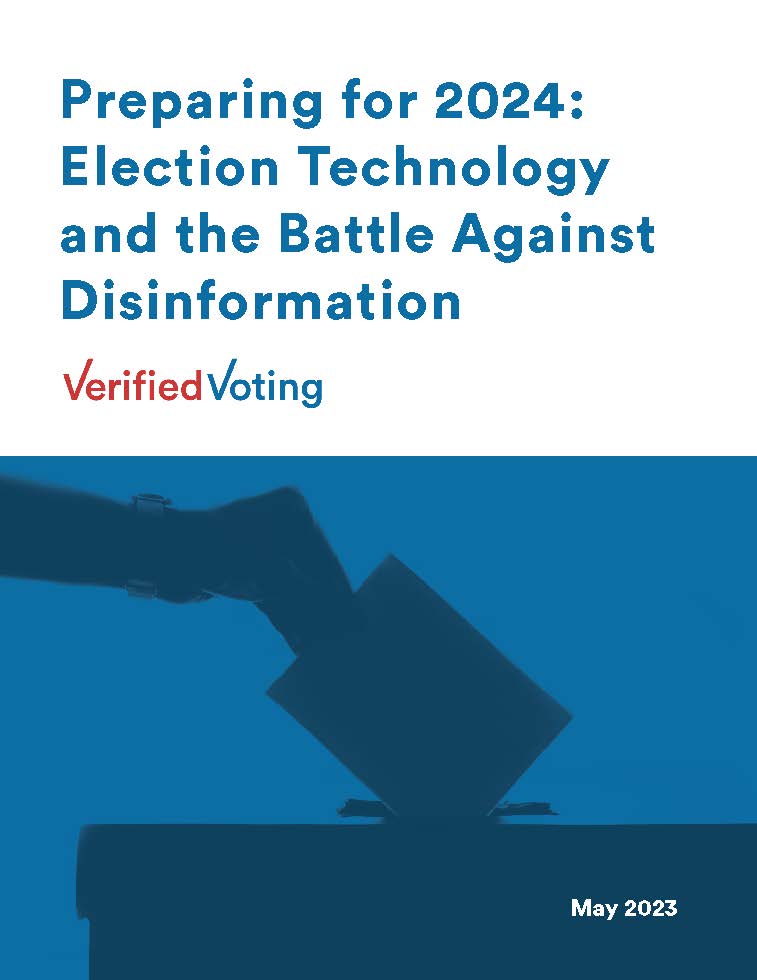
Our paper explains how, despite continued disinformation about the security of voting systems, U.S. voting equipment deployment has become more resilient over time—and how, with the right resources, election officials can make more improvements to how elections are administered ahead of the 2024 elections.
MORE Voting Equipment, Post-Election Audit, Paper Records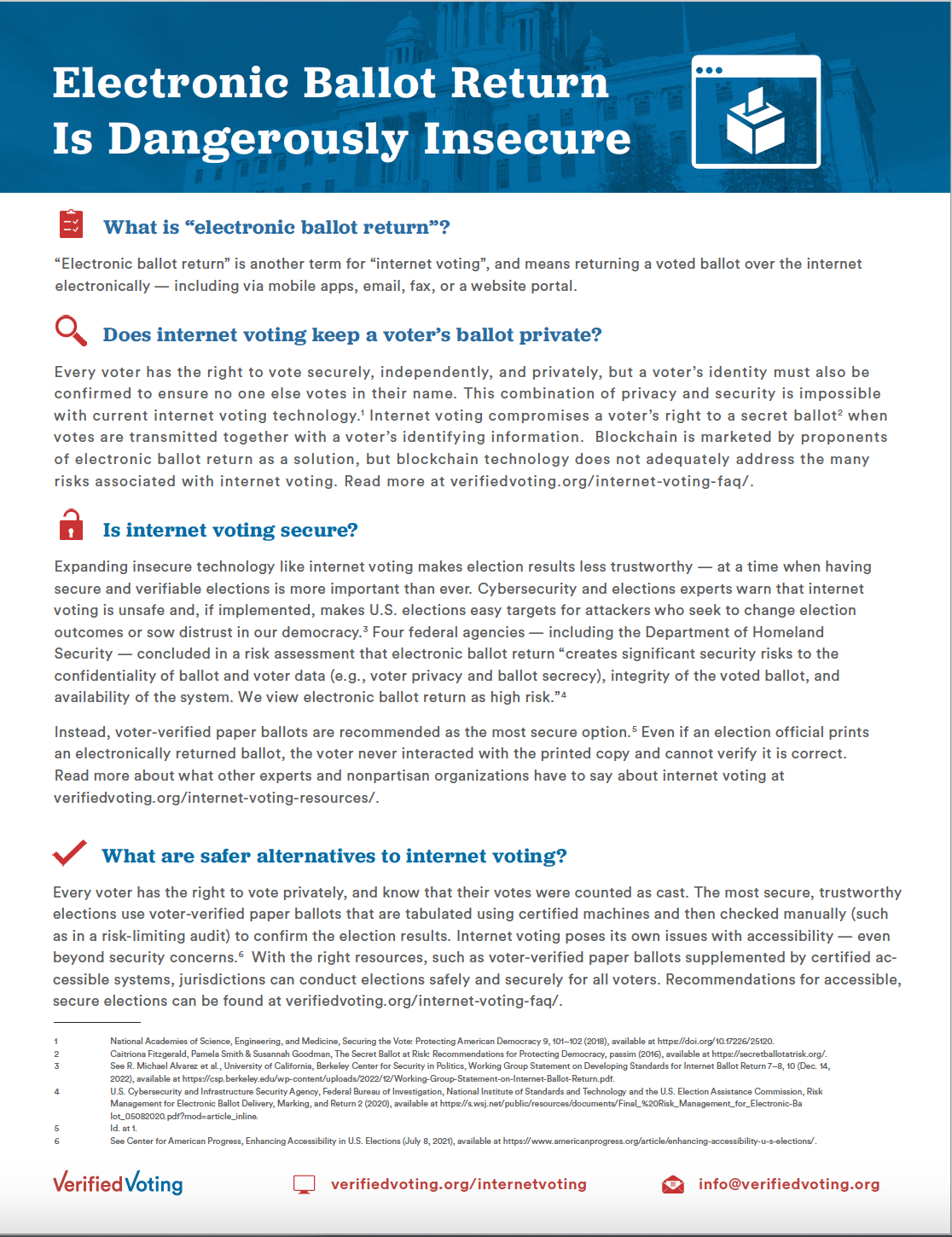
A downloadable resource explaining why expanding insecure technology like internet voting makes election results less trustworthy — at a time when having secure and verifiable elections is more important than ever.
MORE Internet Voting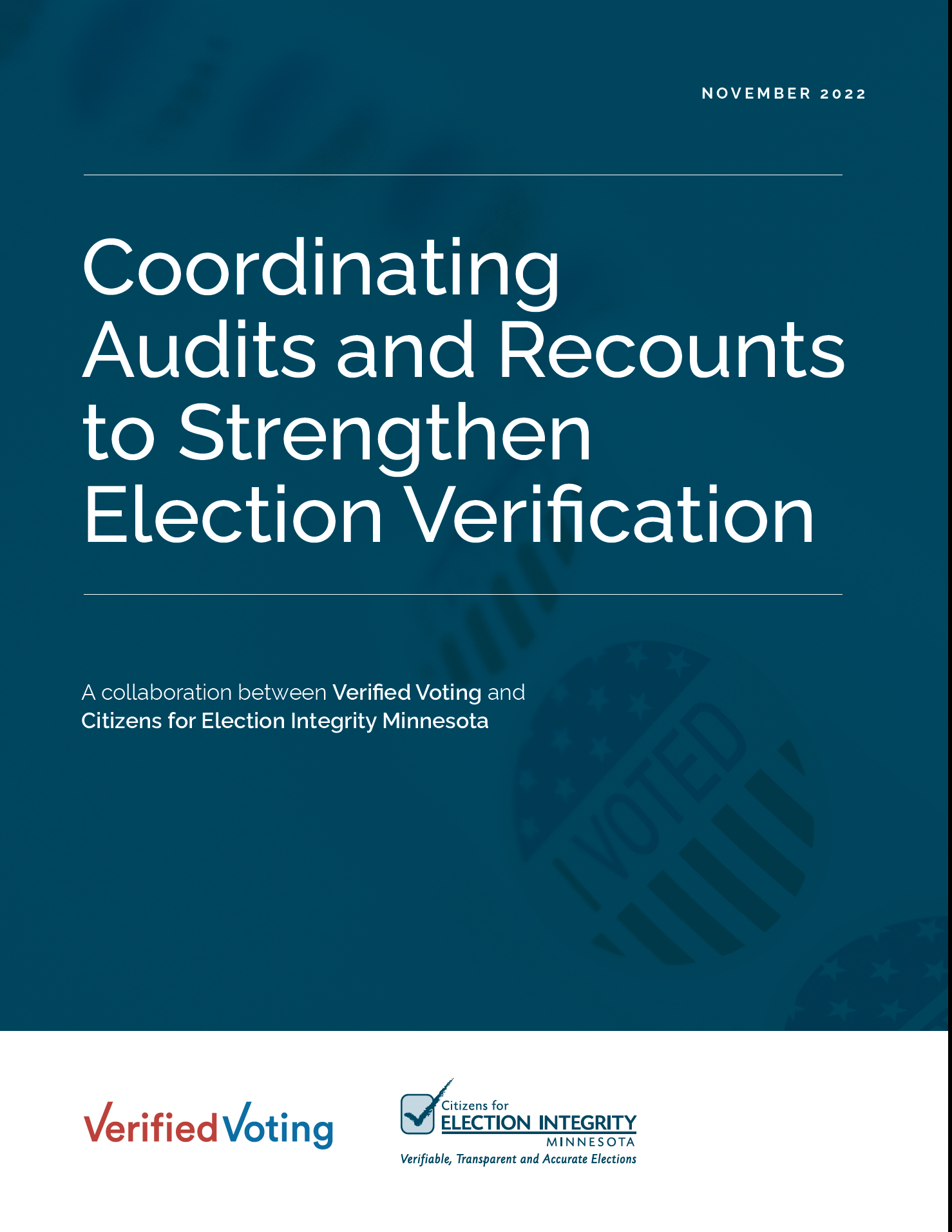
This paper, coauthored by Verified Voting and Citizens for Election Integrity Minnesota, describes how to dovetail audits and recounts to bolster public confidence in election results. Every state can do better, and this paper provides guidelines for how.
MORE Post-Election Audit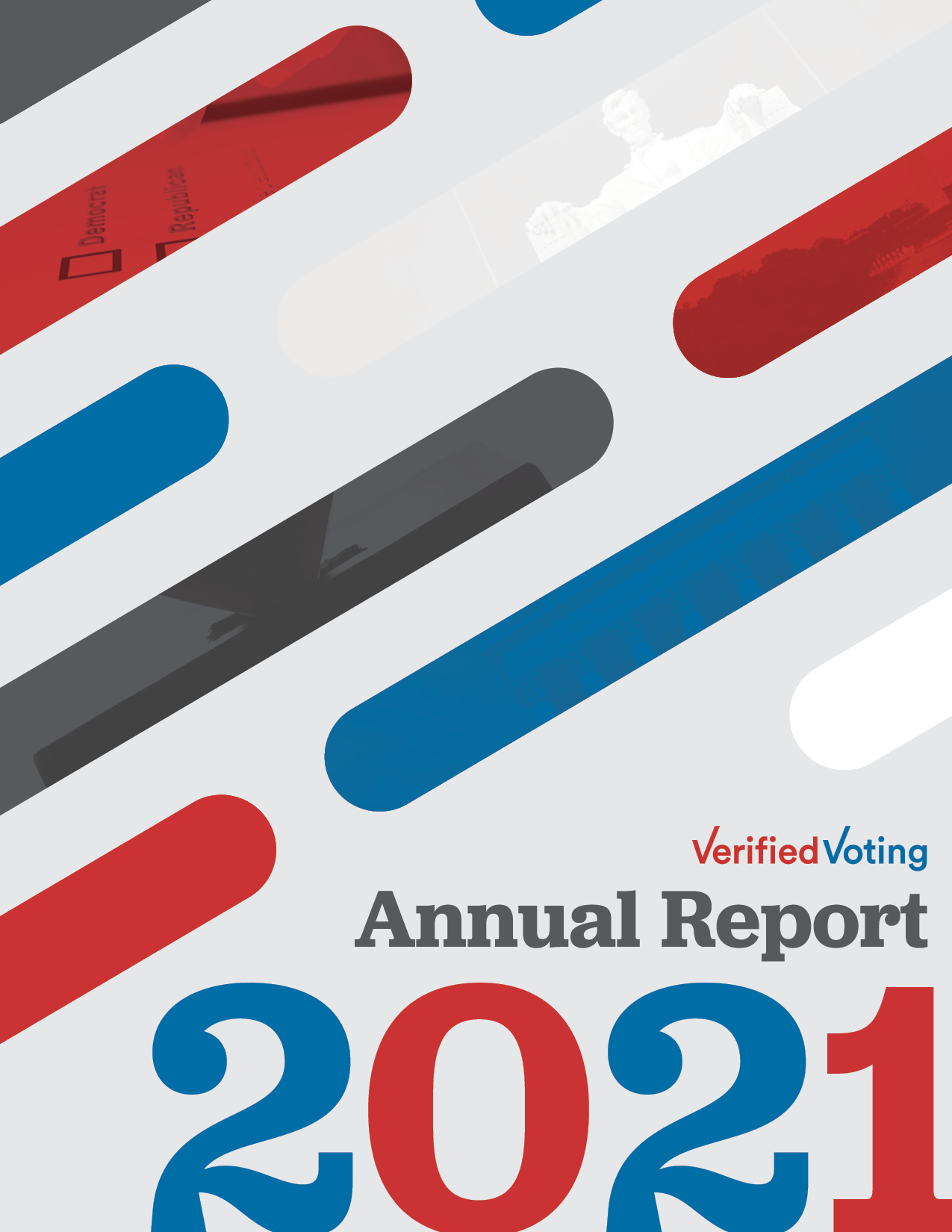
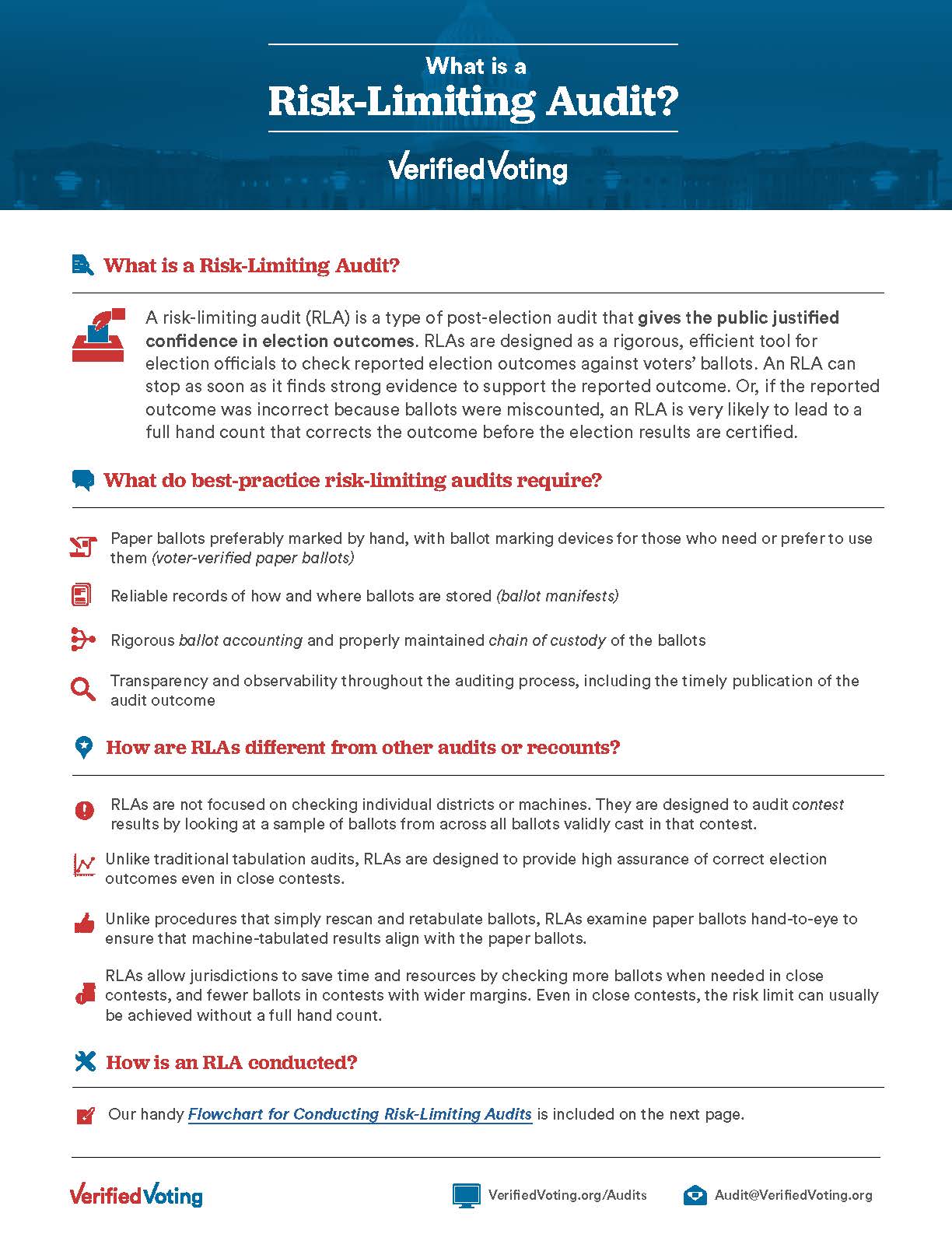
Downloadable resource on the fundamentals of a risk-limiting audit (RLA), including what is needed to conduct an RLA and how an RLA differs from other types of audits.
MORE Post-Election Audit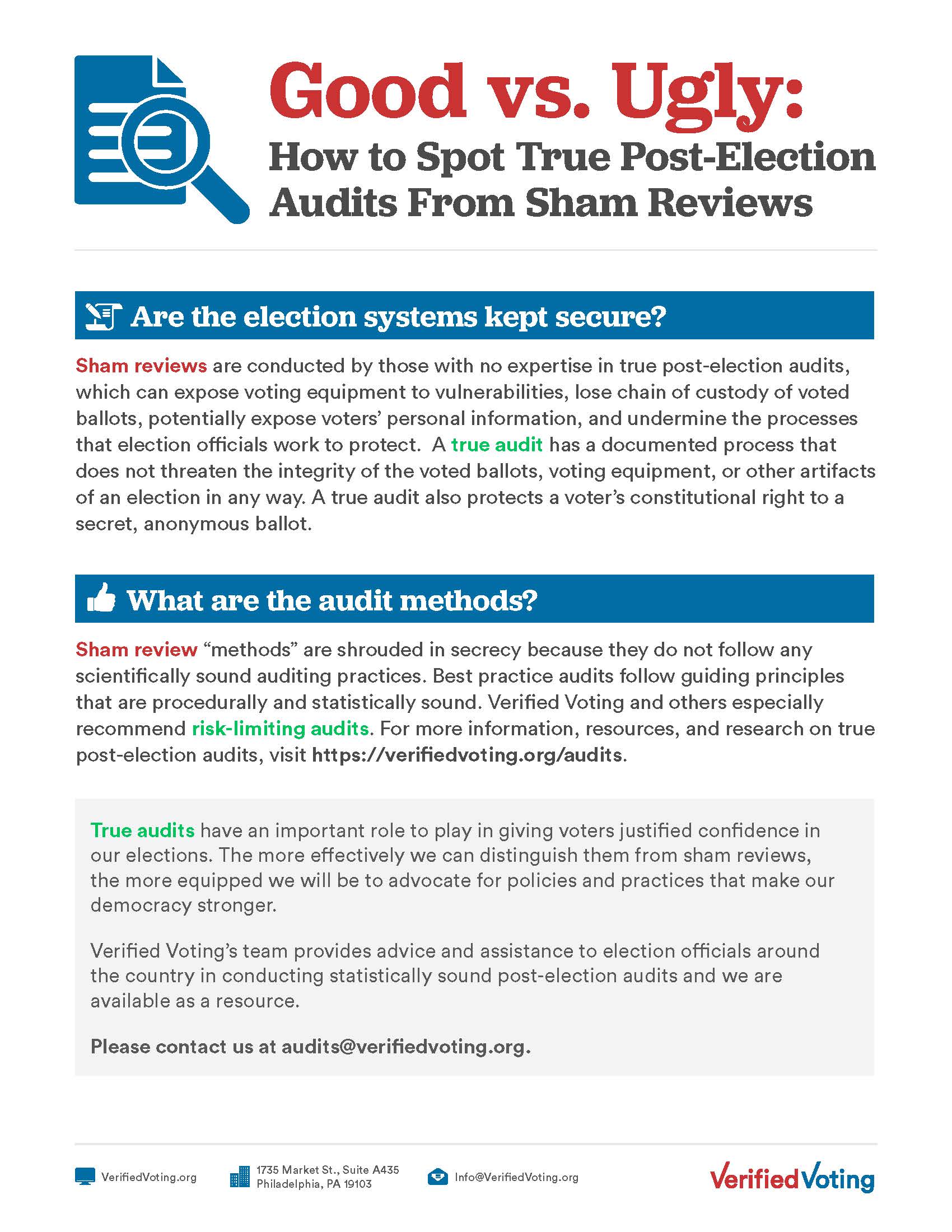
Post-election audits play a significant role in providing evidence that voters can trust election outcomes, but we continue to see calls for sham reviews disguised as “audits.” Sham reviews are designed to undermine legitimate election results, mislead the public, and ultimately leave our elections – and our democracy – less secure. Here’s how to tell the difference.
MORE Post-Election Audit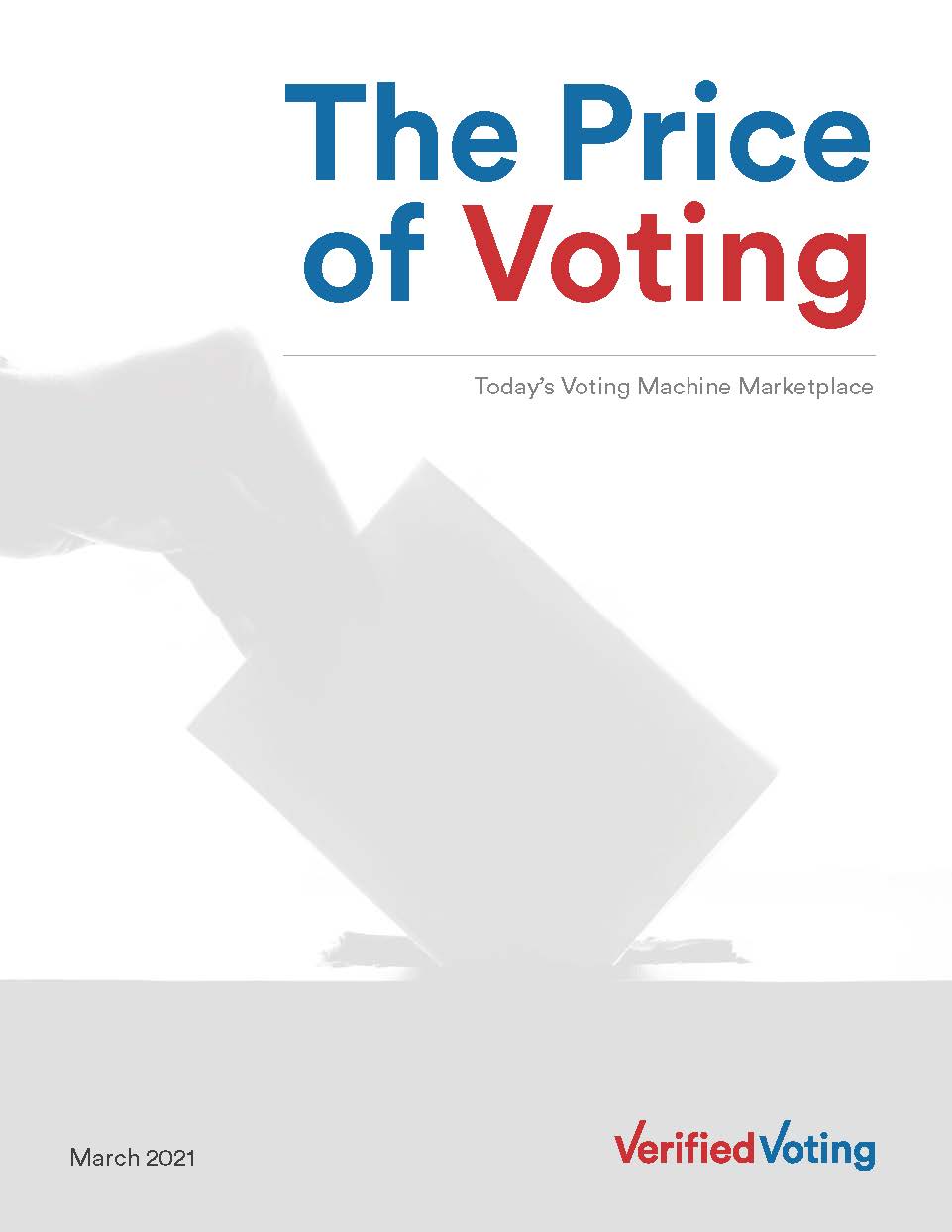
The Price of Voting draws on probably the largest dataset of voting system contracts ever assembled, spanning well over 400 jurisdictions. This wealth of examples provides unprecedented insight into vendors’ pricing strategies, including their wide use of ad hoc discounts and their sizable annual support revenues. The report astutely combines quantitative analysis and case studies to make best use of the available data. At the same time, The Price of Voting is admirably candid about its limitations and cautious in its generalizations. Public officials preparing to acquire voting systems, and citizens concerned about voting system negotiations and contracts, will better understand the challenges after reading it.
MORE Voting Equipment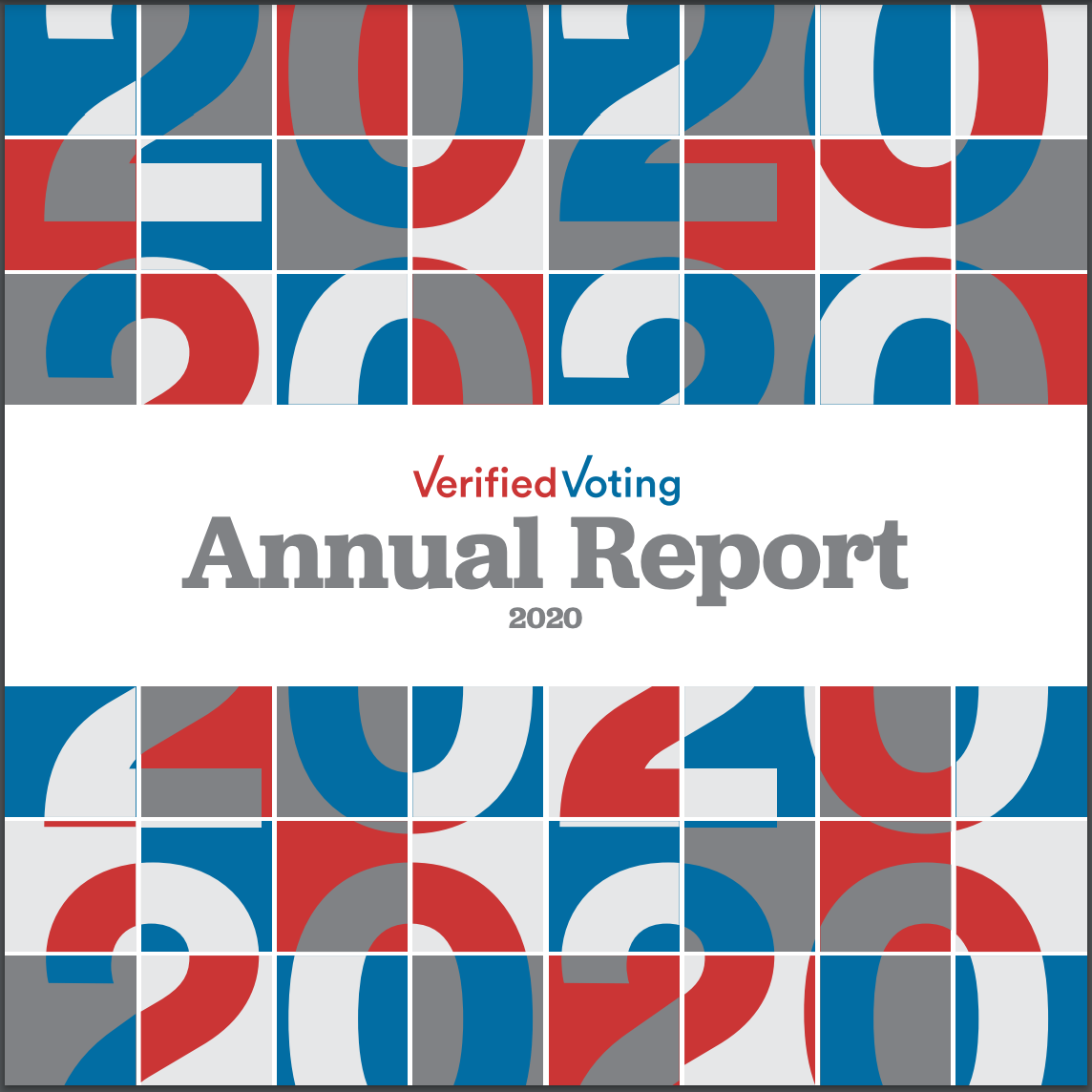

The use of electronic poll books has increased significantly in recent elections. Almost three quarters of registered voters live in jurisdictions in which electronic poll books will be used to check in voters for in person voting at Election Day polling places this November. The Verified Voting team has collected data on electronic poll books, including the makes and models in use across the country, and added it to the Verifier, our comprehensive data set of voting equipment usage.
MORE Voting Equipment
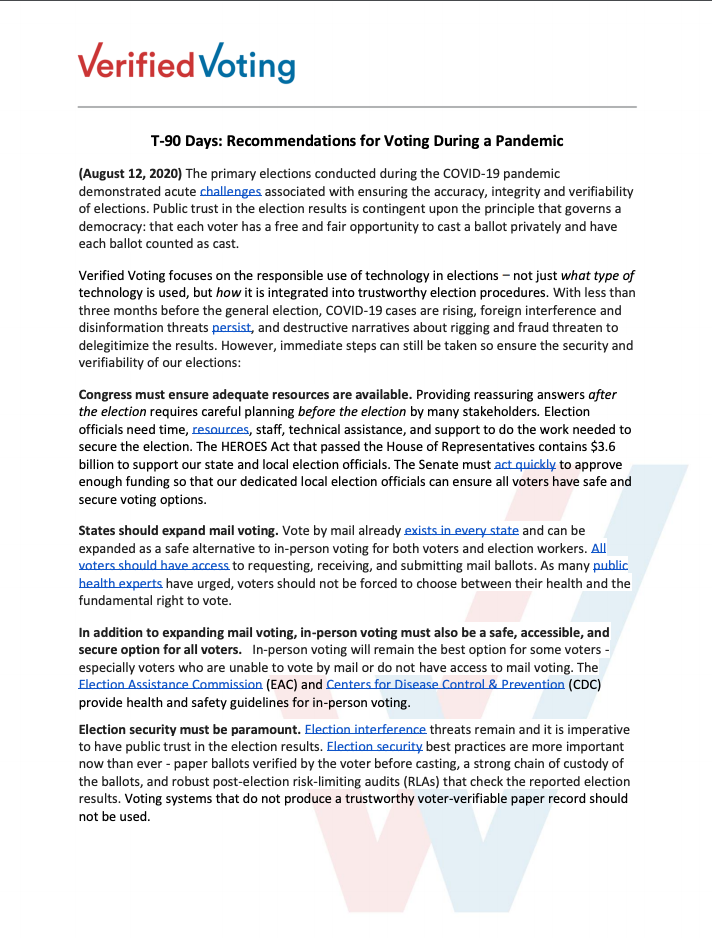
With less than three months before the general election, COVID-19 cases are rising, foreign interference and disinformation threats persist, and destructive narratives about rigging and fraud threaten to delegitimize the results. However, immediate steps can still be taken so ensure the security and verifiability of our elections.
MORE Voting Equipment, Post-Election Audit, Paper Records, Internet Voting, Election Security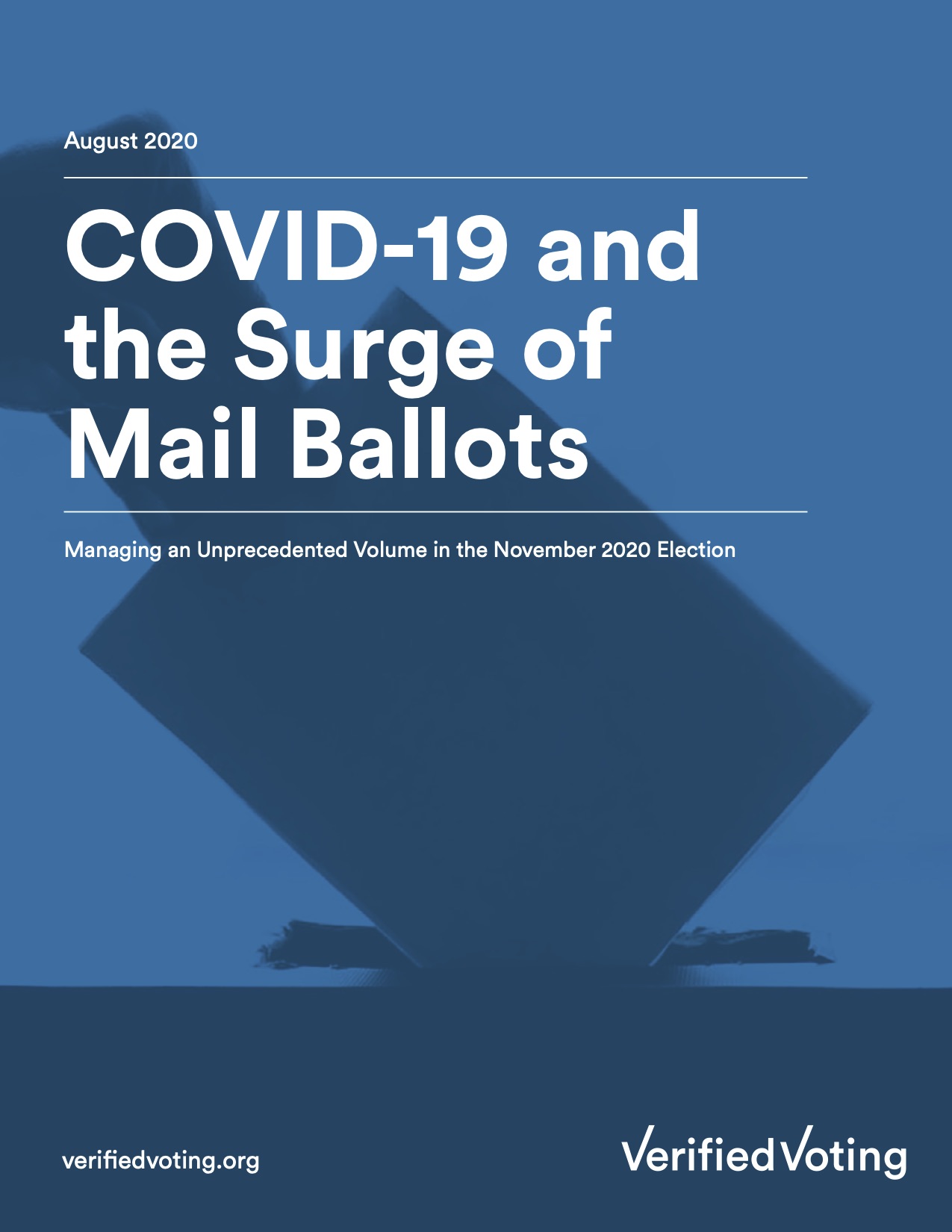
Jurisdictions across the country have seen a significant increase in mail voting during their 2020 primary elections due to the COVID-19 pandemic. Several jurisdictions have required additional time to tabulate results — an indication that they will likely need more time and resources for the November general election. Verified Voting completed an analysis to better understand how many jurisdictions currently counting mail ballots on hand-fed scanners or by hand may face an unprecedented volume of mail ballots for this technology in the 2020 general election.
MORE Voting Equipment, Paper Records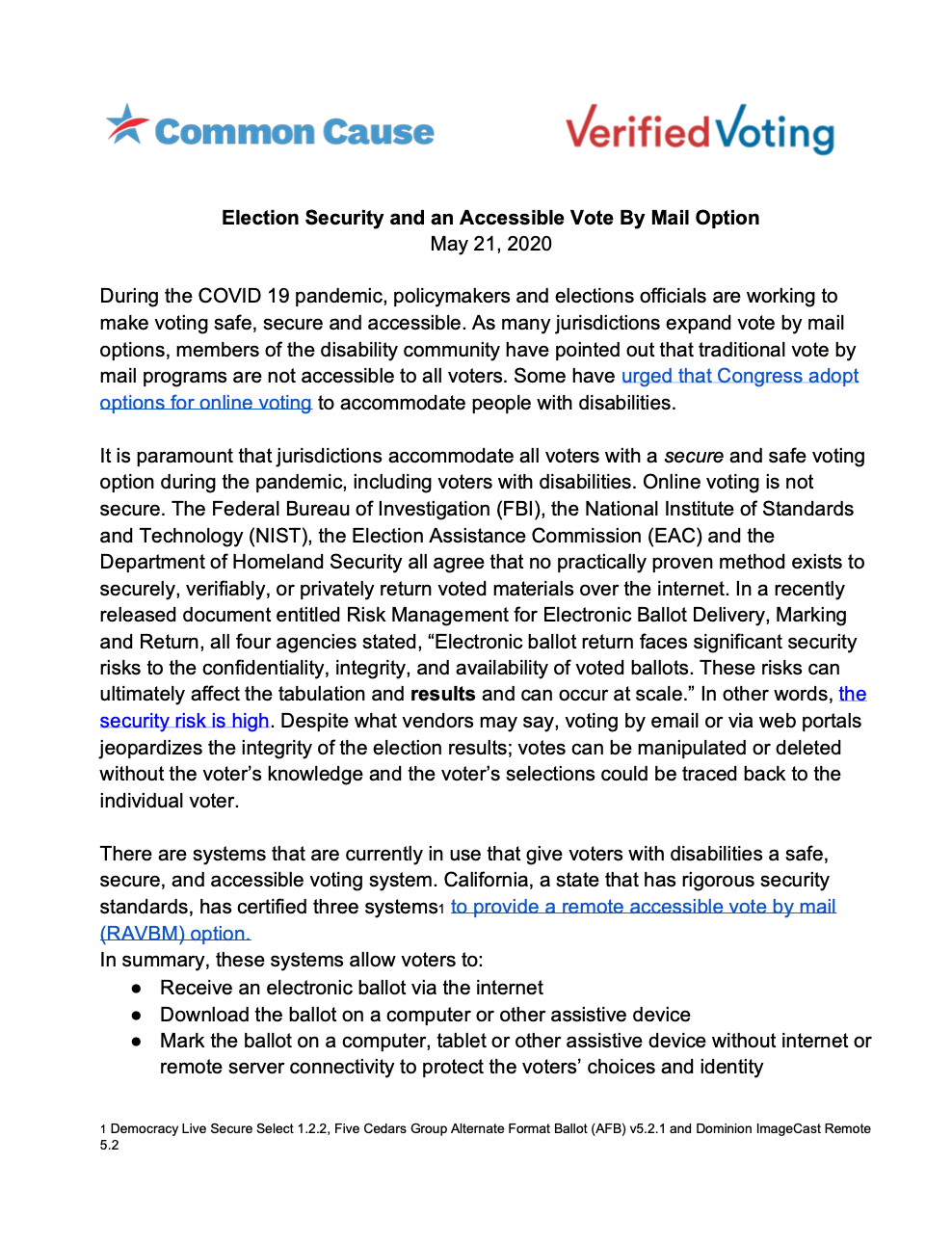
Guidance by Common Cause and Verified Voting outlines that remote accessible vote by mail options that keep voters choices private and secure already exist and should be made available to voters with disabilities as states increase access to vote by mail.
MORE Voting Equipment, Internet Voting, Election Security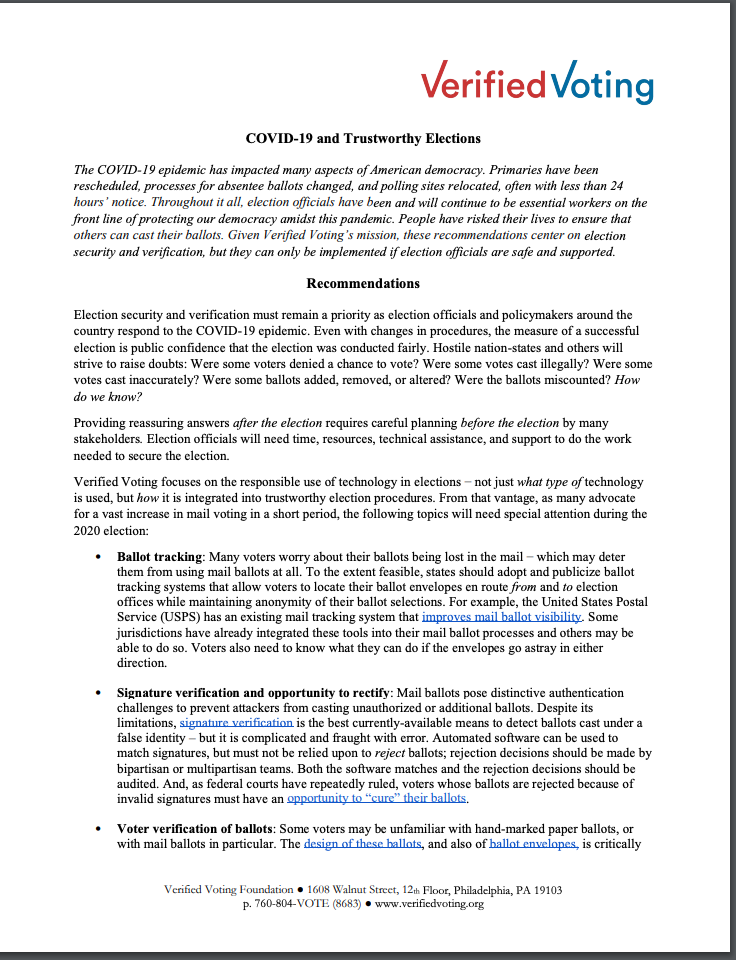
Election security and verification must remain a priority as election officials and policymakers around the country respond to the COVID-19 pandemic. Here are Verified Voting’s recommendations centered on election security and verification.
MORE Election Security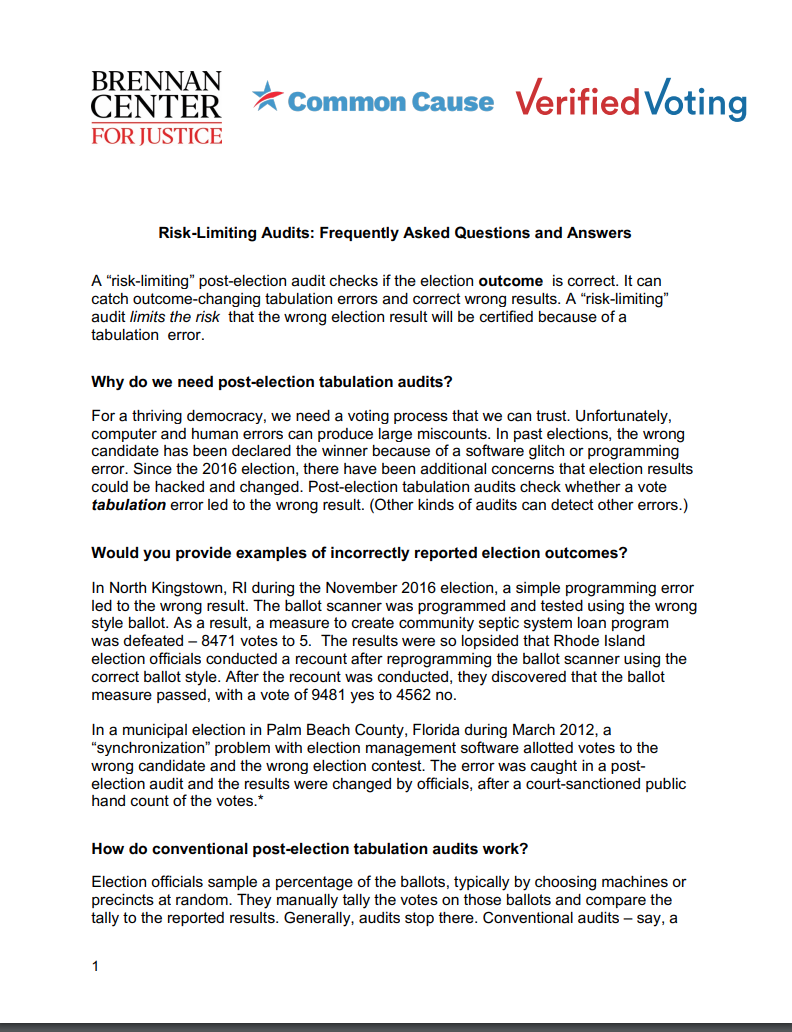
Answers to frequently asked questions specifically on RLAs. Defines what “risk” signifies in an RLA and details different RLA methods.
MORE Post-Election Audit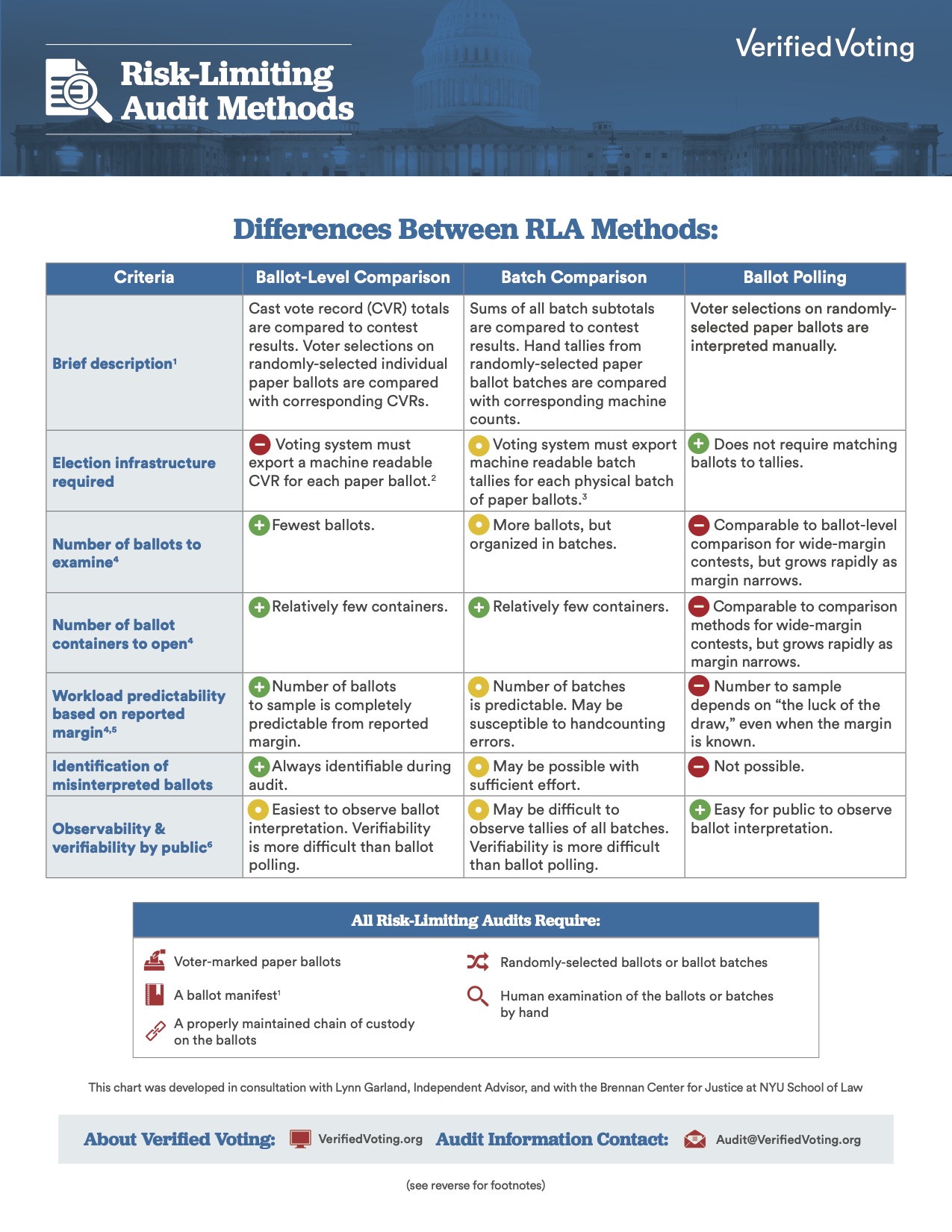
Our guide describing three RLA methods: ballot-level comparison, batch comparison, and ballot polling. This chart was developed by Verified Voting in consultation with Lynn Garland, Independent Advisor, and with the Brennan Center for Justice at NYU School of Law.
MORE Post-Election Audit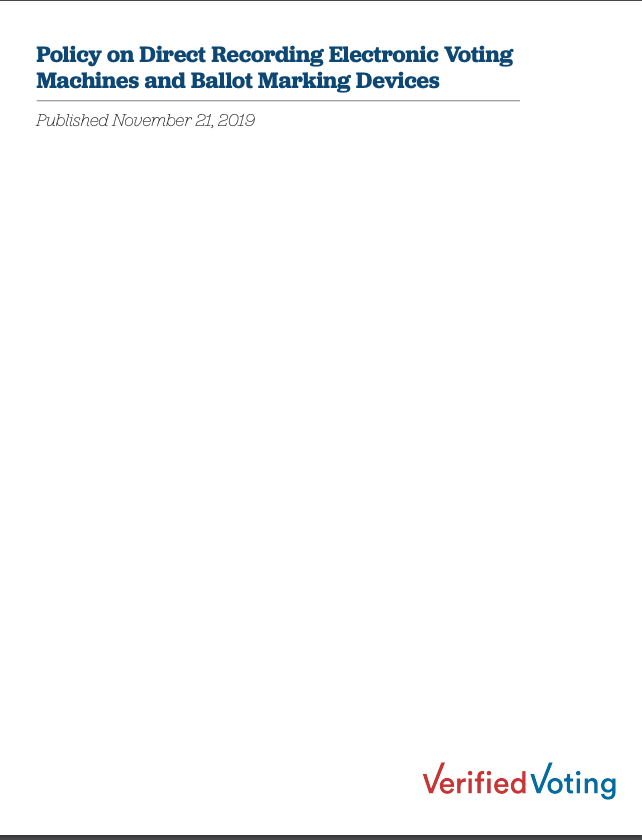
The following is a policy statement issued by the staff of Verified Voting Foundation on the use of Direct Recording Electronic voting systems and Ballot Marking Devices. Ahead of the 2020 presidential election, the U.S. finds itself again in the position of widespread deployment of a relatively newer voting technology — ballot marking devices (“BMDs”). Because devices vary widely, Verified Voting is explicitly stating our current views on evaluation, ongoing development and best practice deployment of this technology.
MORE Voting Equipment, Paper Records, Election Security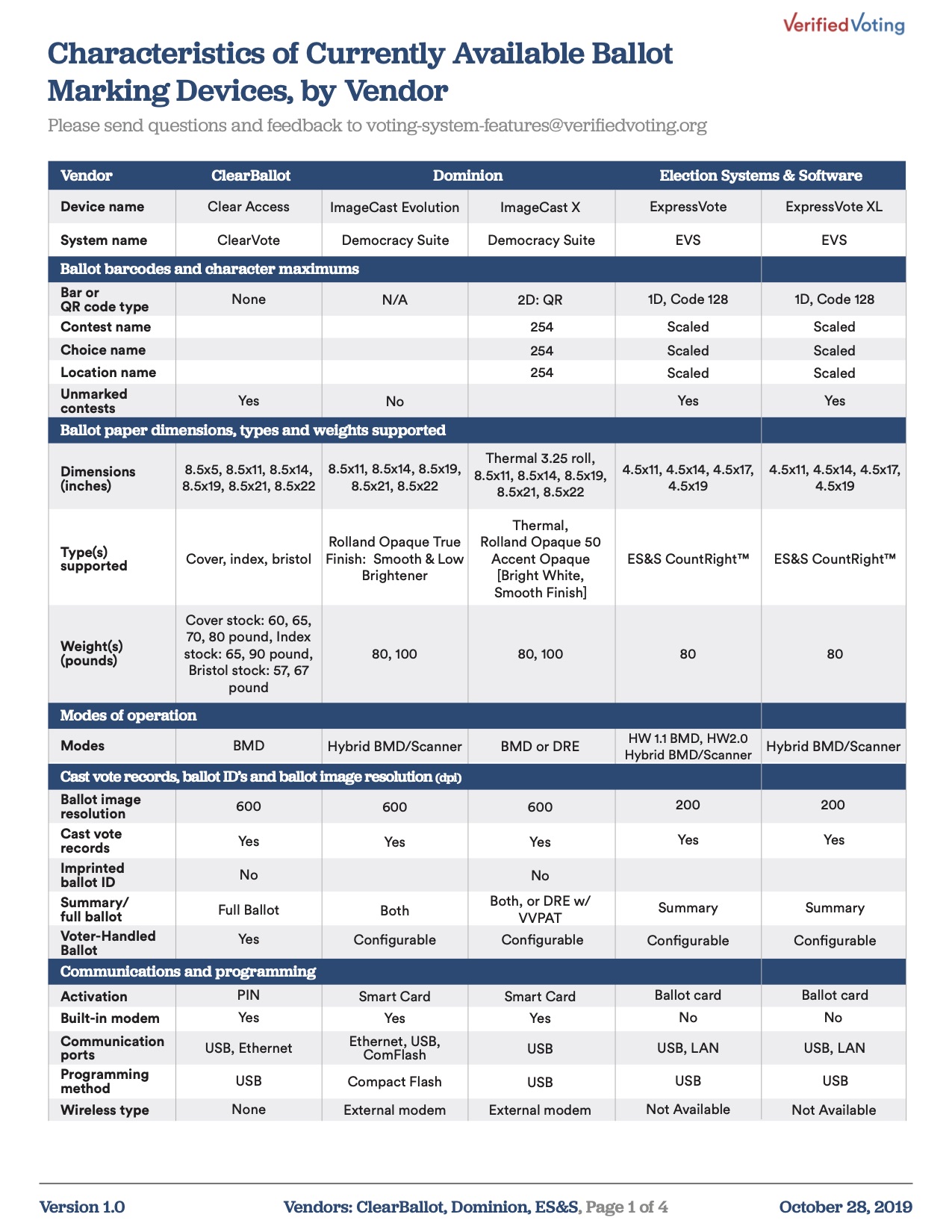
A guide comparing the features of ballot marking devices (BMDs) available in the United States. The guide is intended to be a useful comparison chart between the various BMD vendors and devices for informational purposes. Verified Voting does not endorse any specific vendor or device.
MORE Voting Equipment, Paper Records, Election Security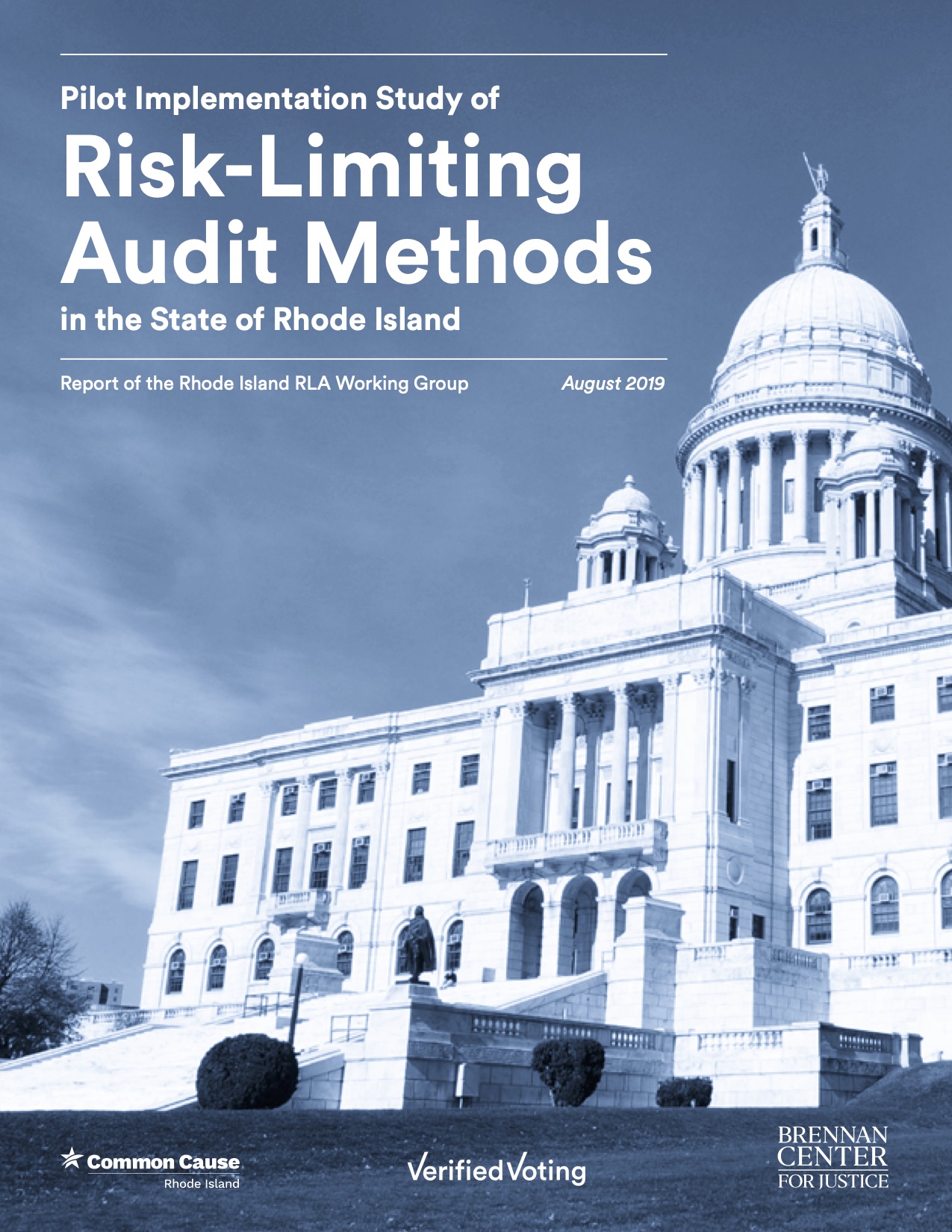
This report details how, through a collaborative effort, Rhode Island successfully conducted three pilot RLAs. It provides a general overview of RLAs, including the advantages and disadvantages of each method and can be used as a case study for successfully conducting a RLA. The report describes the history of election administration in Rhode Island, which has led to the environment in which elections are conducted in the state today. It also lays out the essential components of the audits – their design, software tools, and presentation – and provides the results of the audits. Finally, the report describes some of the key lessons learned throughout the process, and it makes recommendations for future audits.
MORE Post-Election Audit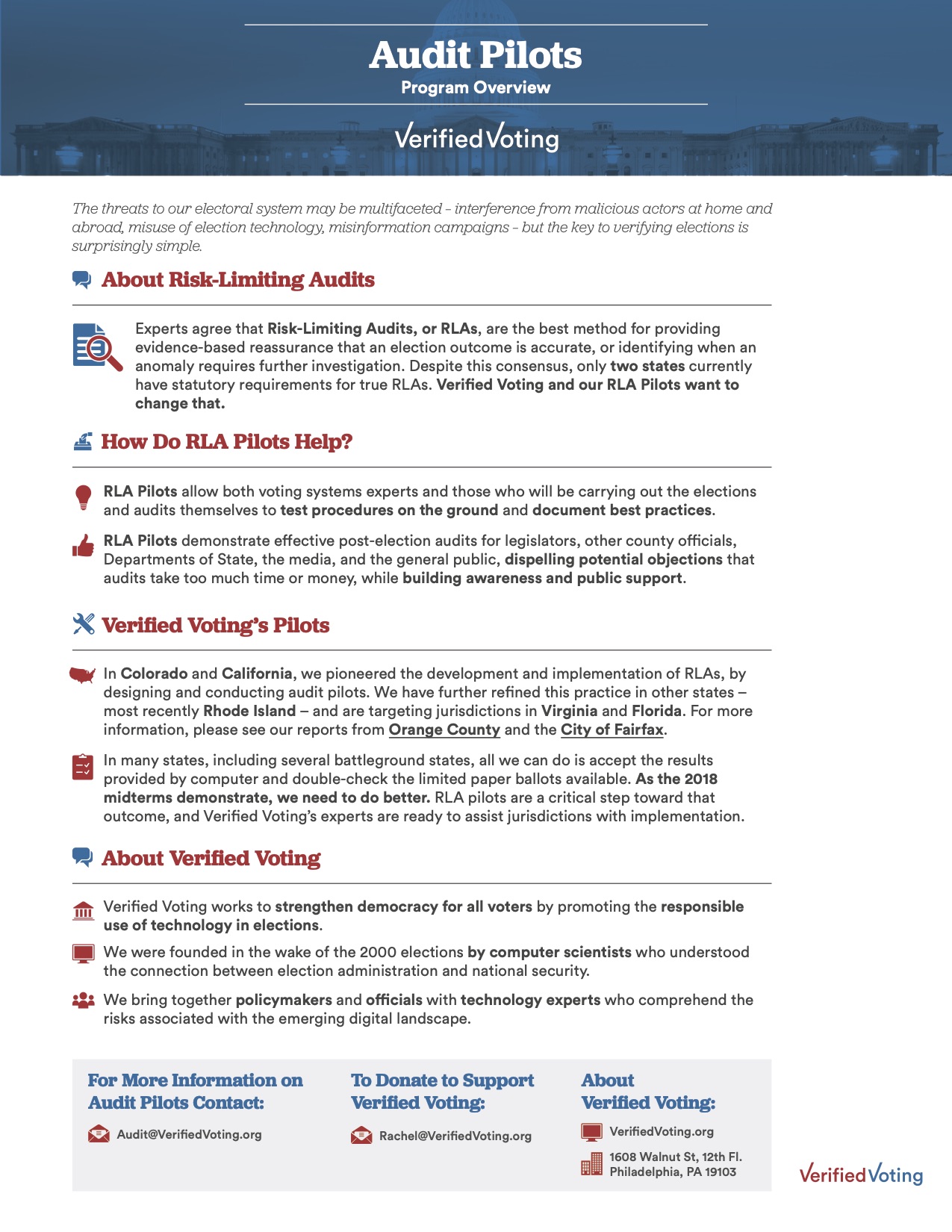
Experts agree that risk-limiting audits, or RLAs, are the best method for providing evidence-based reassurance that an election outcome is accurate, or identifying when an anomaly requires further investigation. Despite this consensus, only two states currently have statutory requirements for true RLAs. Verified Voting and our RLA Pilots want to change that.
MORE Post-Election Audit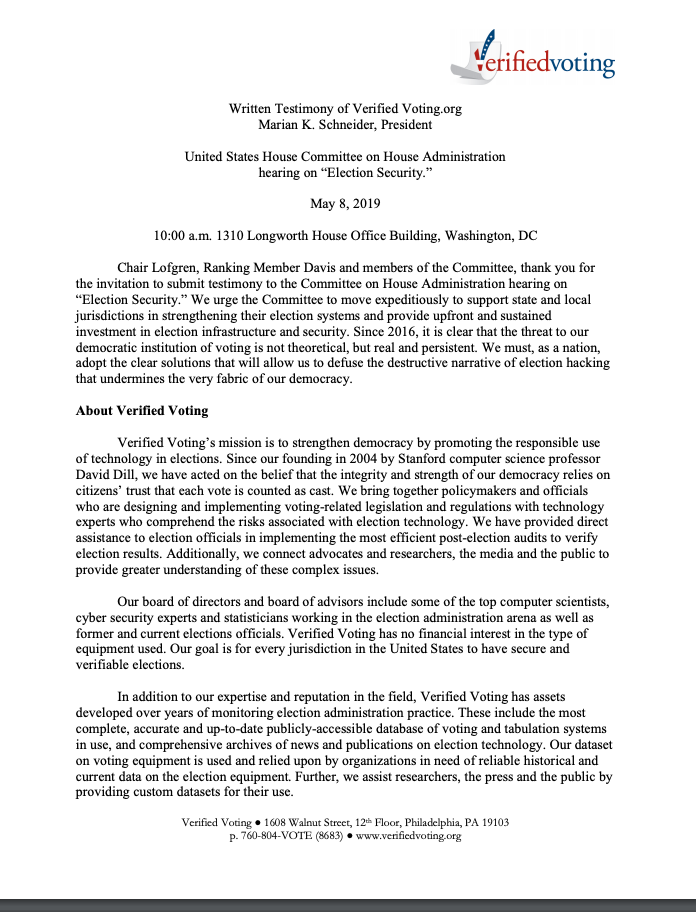
Excerpt: “We urge the Committee to move expeditiously to support state and local jurisdictions in strengthening their election systems and provide upfront and sustained investment in election infrastructure and security. “
MORE Voting Equipment, Post-Election Audit, Paper Records, Internet Voting, Election Security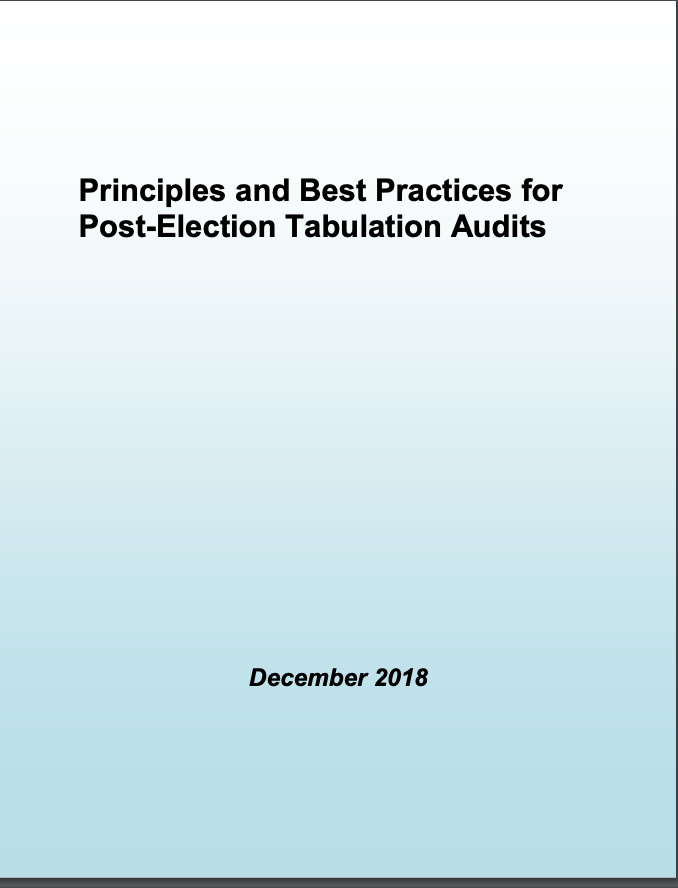
Details the nine principles and best practices meant to guide the regulation and design of high-quality post-election audits and is endorsed by the American Statistical Association and organizations within the election security coalition.
MORE Post-Election Audit, Paper Records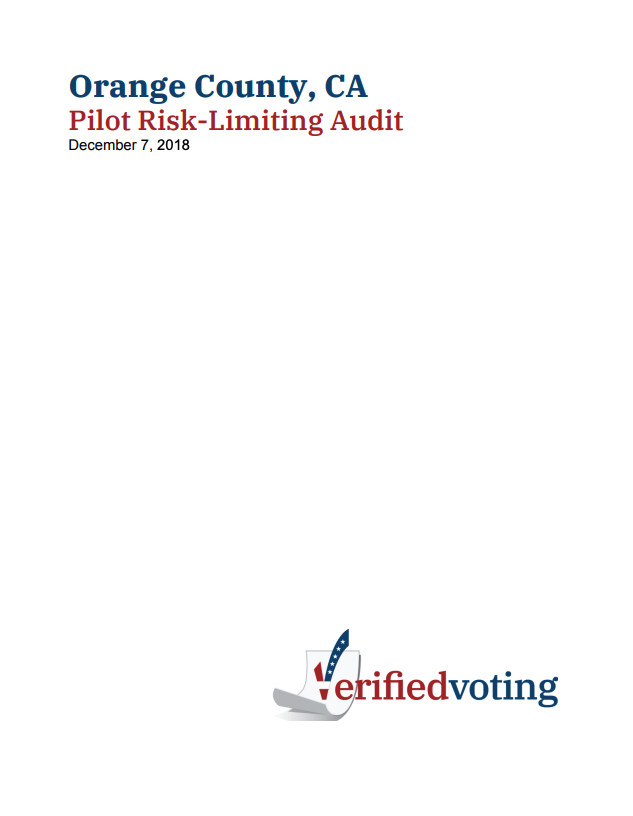
Report on the RLA pilot conducted in the City of Fairfax, Virginia, the state’s first RLA pilot.
MORE Post-Election Audit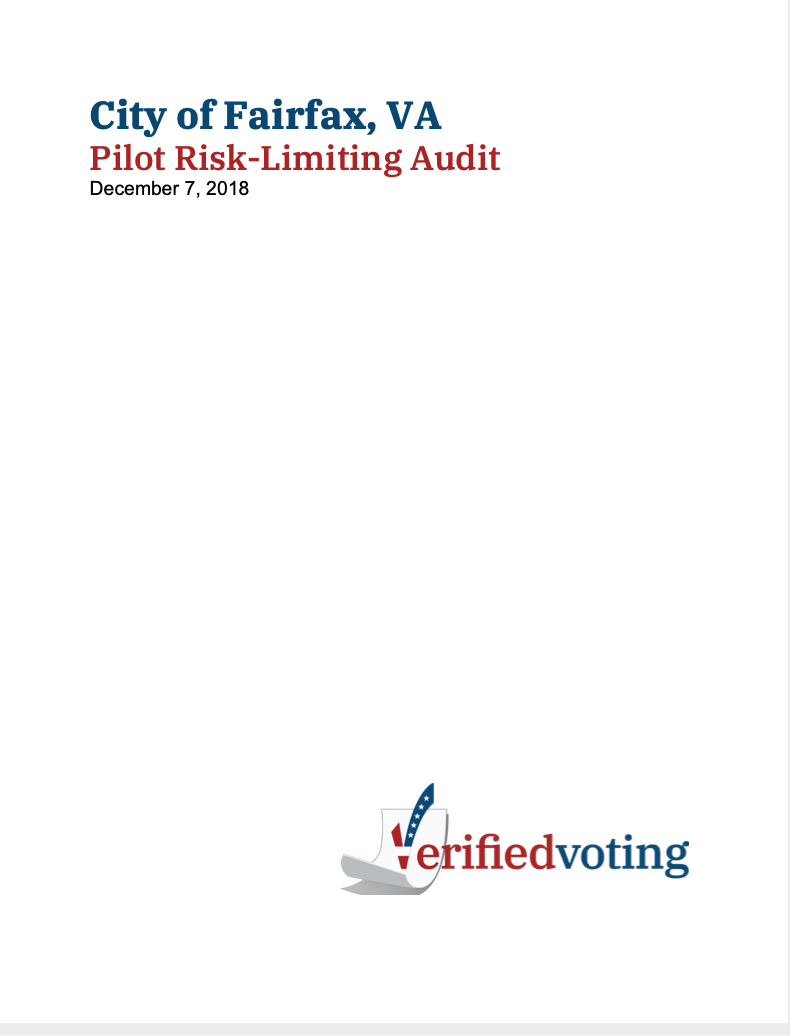
Report on the RLA pilot conducted in the City of Fairfax, Virginia, the state’s first RLA pilot.
MORE Post-Election Audit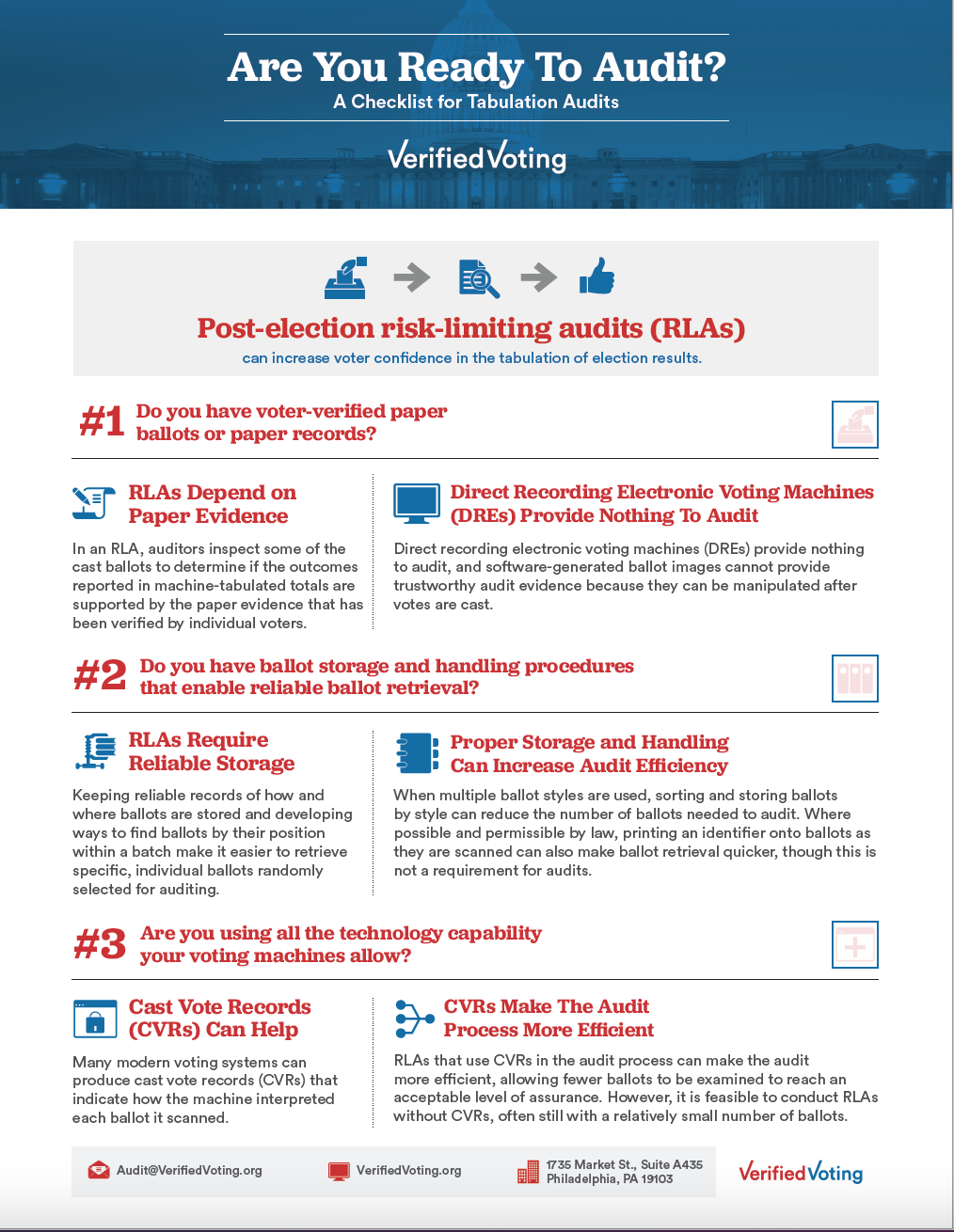
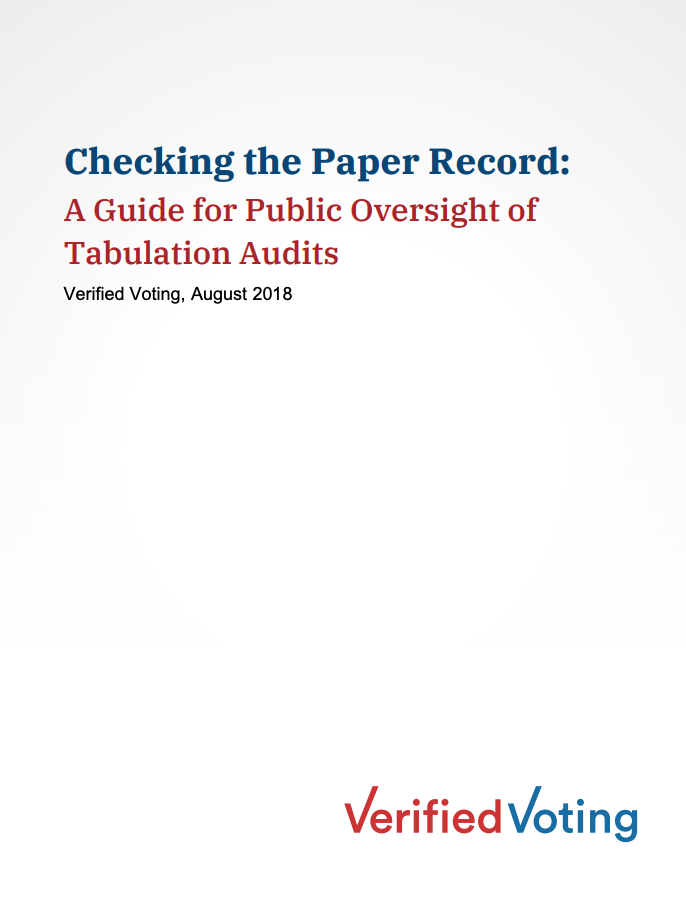
A guide for public oversight of tabulation audits.
MORE Post-Election Audit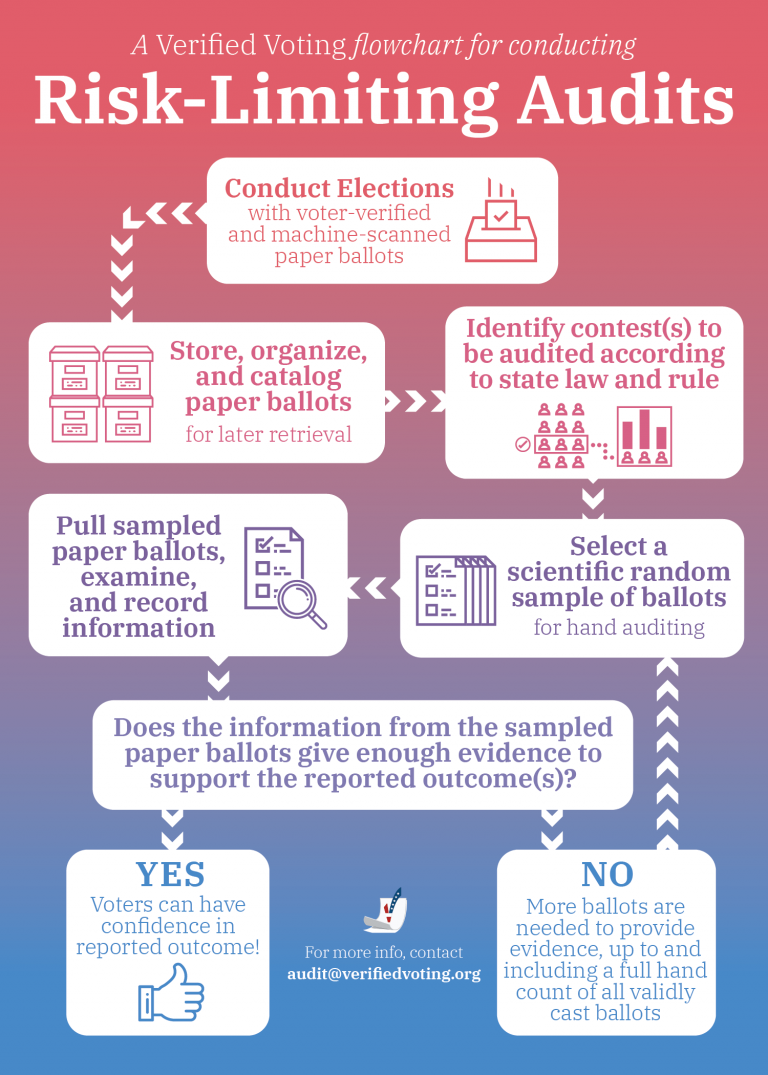
Verified Voting’s handy flowchart for conducting Risk-Limiting Audits.
MORE Post-Election Audit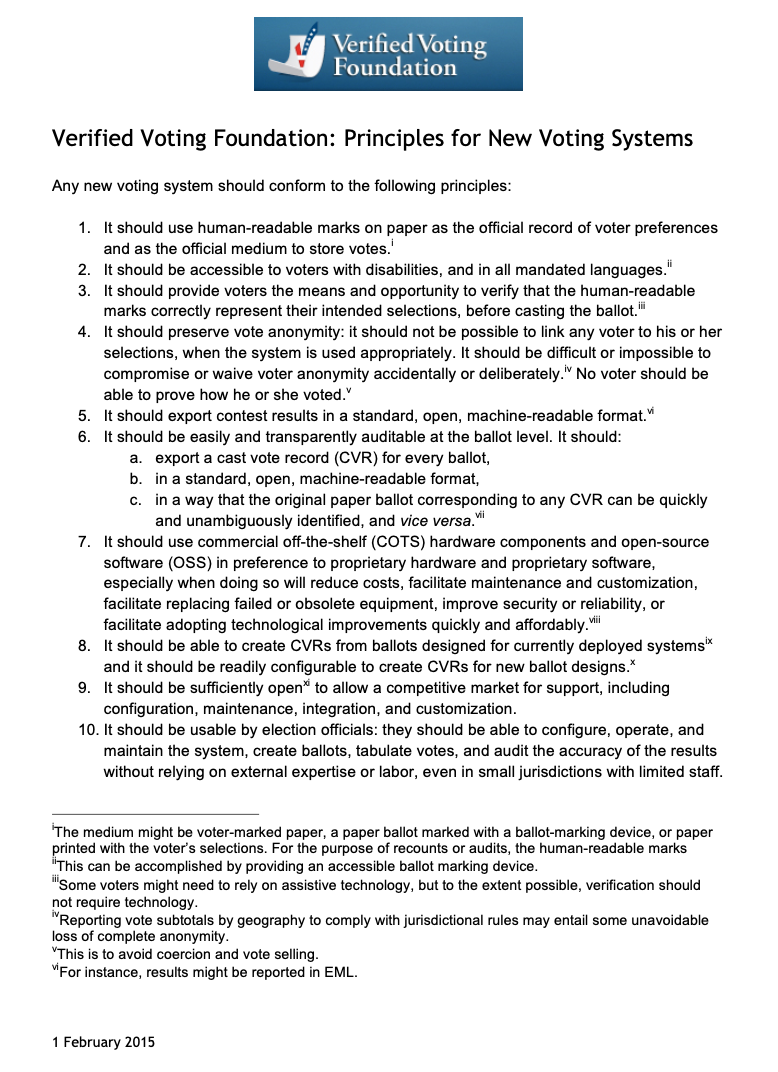
Any new voting system should conform to these principles.
MORE Voting Equipment, Paper RecordsVoting security, privacy, and transparency requirements are structurally different from those for E-Commerce transactions
MORE Internet Voting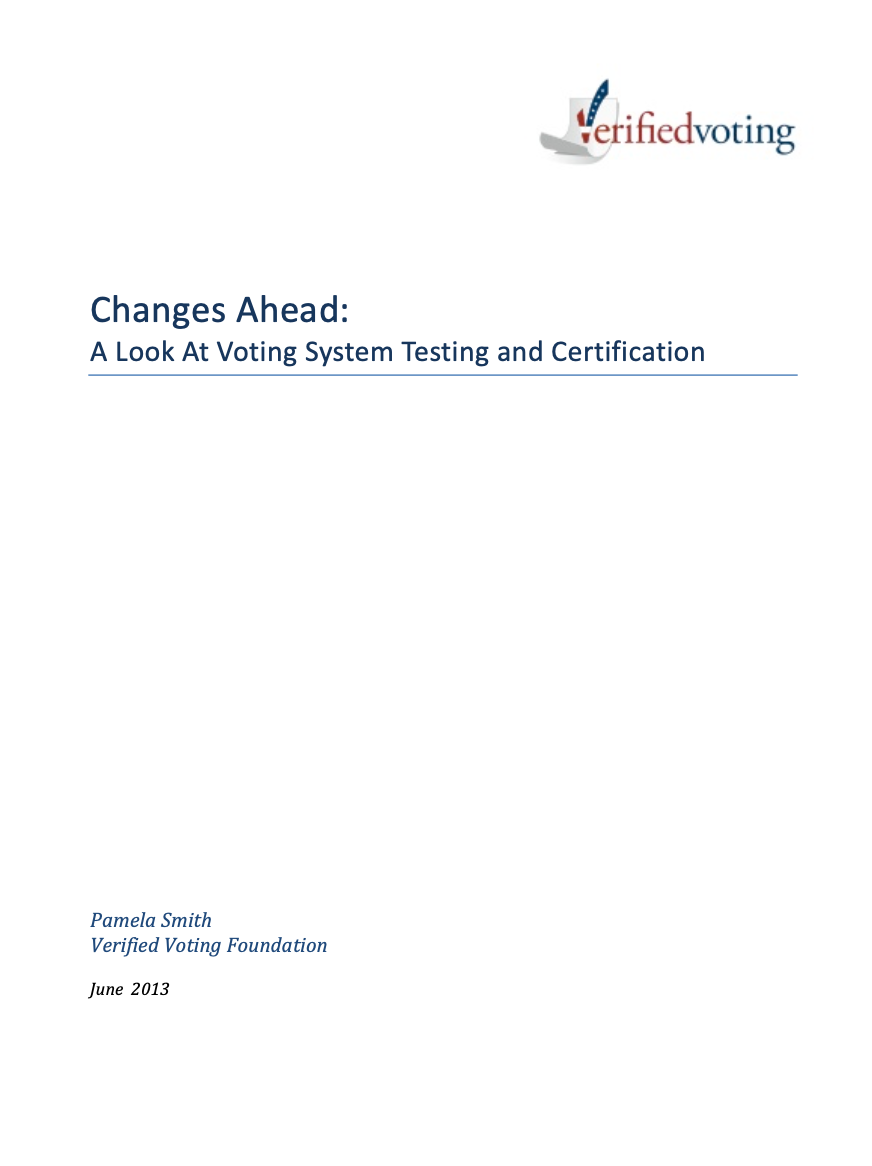
This informal report provides a look inside the framework for voting system testing and certification in the states and the nation, and explores how California’s current process fits into that framework.
MORE Voting Equipment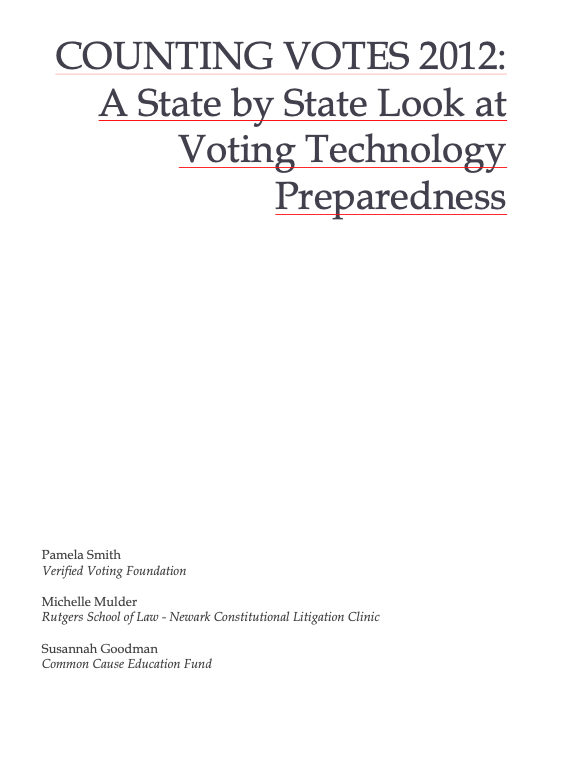
In July, 2012, the Verified Voting Foundation, together with Common Cause and the Rutgers School of Law released a report that surveyed election preparedness for the 2012 General Election.
MORE Voting Equipment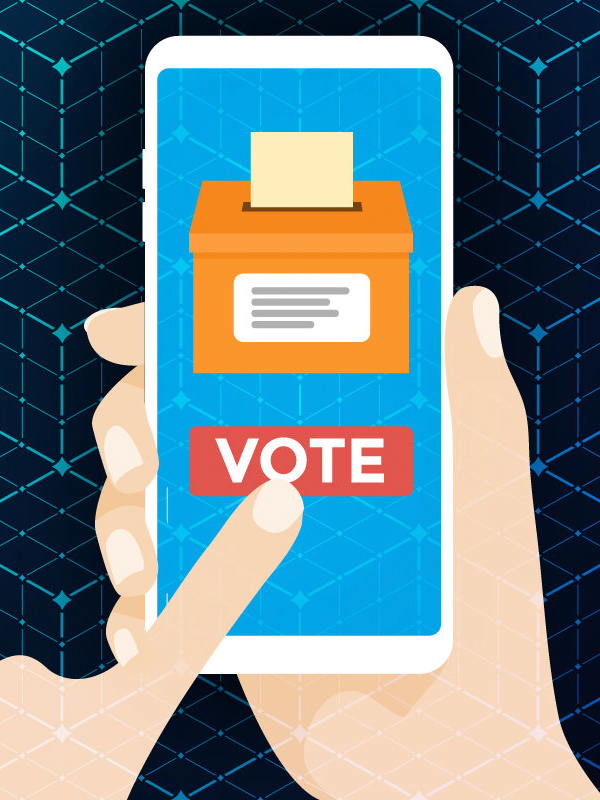
A paper on the problems with the electronic transmission of voted ballots.
MORE Internet Voting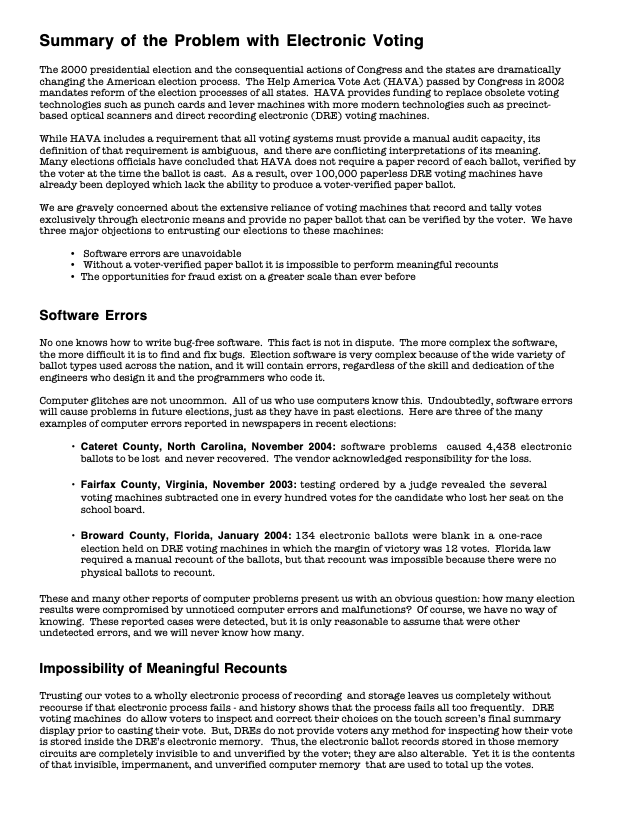
The 2000 presidential election and the consequential actions of Congress and the states are dramatically changing the American election process.
MORE Voting Equipment, Internet Voting
